
Two decades after Millennium Park opened,


Two decades after Millennium Park opened,
By John Pletz
Mario Guallpa, a New York middle schooler, was so fascinated by “The Bean” that he made a replica of the sculpture for a class project. Then he begged his father to take him to see it in person. Last month, they flew from Long Island to Chicago and counted themselves among the 20 million people who likely will visit Millennium Park this year. Since it opened 20 years ago today, Millennium Park has been a tourism magnet, ranked among the 10 most visited sites
See MILLENNIUM on Page 34
The Bears, Sox and Red Stars want new stadiums. Could taxpayers get stuck footing the bills? I PAGE 11

The vice president’s elevation to the top of the ticket could re-energize local fundraisers and potentially tap new donors
By Justin Laurence
As Vice President Kamala Harris tightens her grip on the Democratic nomination for president, her campaign has announced record fundraising hauls that have calmed fears that uncertainty at the top of the ticket would give donors pause.
those who have already ponied up for the Democratic National Convention host committee, charged with welcoming the party to the city Aug. 19. Fundraisers in the works
Millennium Park became a shining example of Chicago’s tradition of public-private partnership.

Springfield ponders whether to fix or just throw money at
Harris inherited the campaign apparatus of President Joe Biden, including his hefty political account. The former California senator has added over $100 million to that pool in the days since Biden exited the race, according to CBS News. A Democratic super PAC, Future Forward, brought in another $150 million, according to Politico.
It’s too early to track how much of that poured in from Illinois. But Chicago’s donor class is signaling they’re likely to pump money into her campaign and affiliated Democratic super PACs, despite what one bundler described as potential “donor fatigue” among
Harris’ ability to deliver a clear message supporting abortion access and her potential to be the first Black and South Asian woman occupying the Oval Office could also draw out the checkbooks of new donors, according to fundraisers with experience asking wealthy Chicagoans to empty their pockets.
A donor who helped bundle contributions for Harris’ campaign for the 2020 nomination told Crain’s there is a “significant appetite to hold fundraisers,” but the logistics of hosting them are on pause as Harris fills out her campaign team and organizes a new strategy.
The donor, who asked not to


Massive South Works quantum project now must get nearby residents on board.

Few things are more important to Chicago’s economy than having a safe, reliable, comprehensive and affordable public transit system.
What we have today isn't any of that.
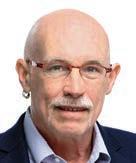
Greg Hinz
“What we’re doing now isn’t working,” says state Rep. Kam Buckner, a Chicago Democrat who has focused on transit issues in his career. That’s why all of us — train riders and automobile users, workers and employers — would be well advised to pay close attention to Springfield and what lawmakers are preparing to do. And not do.
On the table in a series of legislative hearings that recently began are various proposals intended to provide a needed financial bailout to the Chicago Transit Authority, Metra and Pace as they struggle to adapt to the post-COVID world and, in turn, require much better coordination and oversight of agencies that far too often act in isolation.
Both sides of that equation, the carrot and the stick, are needed if
the Chicago area is to get the transit system it used to have, much less the quality of service Paris, London, Tokyo and other peer cities enjoy. But with the transit agencies in full turf-protection mode, I fear lawmakers will end up coughing up the money without imposing real conditions.
That would be a huge mistake. Gov. J.B. Pritzker needs to get involved here. He’s the one official with the statewide perspective and clout to force real change. More on him later.
The true state of this debate was apparent recently when, led by Chicago Transit Authority
President Dorval Carter, the transit chiefs said lawmakers need to pony up new taxes to close a $730 million projected deficit in 2026 and forget that nasty talk about merging the three together or other significant reform.
At least Carter didn’t repeat what he told the City Council earlier this year: that firing him and taking away mayoral control of the CTA (and suburban control of Metra and Pace) would be “racist,” a statement Carter made even though 29 of the 50 alders have signed a resolution urging Carter be dumped for the ghost trains, missing buses, soaring crime and filthy stations that
flourished amid COVID and still occur in far too many instances. The at-least-partial exception to the preceding stonewall comes from Kirk Dillard, chairman of the Regional Transportation Authority, which does its best with limited authority to get the CTA, Metra and Pace on the same page despite supermajority vote requirements on its board that
fare policy, focus on security and make key decisions on where limited capital dollars ought to go, Dillard proposes.
“I believe we can achieve meaningful reform by strengthening the RTA,” he says.
The idea has some potential.
Micheal Podgers, policy lead at the activist group Better Streets Chicago, notes the three agencies,
Illinois does not need yet another tax hike on services, congestion, highway tolls or whatever that could end up going down a swirling hole. It needs a better transit system.
allow each of the operating units to protect its turf from change.
Dillard says he backs an alternative to consolidation pitched by the Chicago Metropolitan Agency for Planning. That’s to give the RTA or a successor regional agency new powers to cut fat, move money where it needs to go and improve service. For instance, Dillard calls for consolidation of much of the back offices of the three agencies so that each doesn’t have its own purchasing, public relations, personnel and other such administrative units. The RTA also ought to set overall
after decades of public pressure, only now are testing a pilot program to allow riders to use one fare card on all three systems. Wow! An empowered RTA could require CTA and Metra to coordinate service, decide how fares need to be adjusted, speed the transition to electric vehicles and contextualize the ongoing extension of the Red Line South with other transit needs, he says. Chicagoland Chamber of Commerce CEO Jack Lavin agrees. Getting “the best customer experience” requires not only more tax money but smarter
decisions on how that money is spent, he says.
Illinois Senate Transportation Committee Chairman Sen. Ram Villivalam, who has begun hearings aimed at producing a bill that can pass by next spring, says he intends to hold firm: No reform, no money. “It’s incredibly difficult to have true oversight of four different agencies,” as he puts it.
Still, knowing how Springfield works, I fear a scenario is setting up in which the CTA will threaten to cripple the city’s economy with mass service cuts unless it gets its way and scared lawmakers will pony up while settling for just cosmetic, unenforceable “reform.” That would be a major blunder, and Pritzker, who recently called for “an evaluation of (transit) leadership,” is in position to give reformers the political backing to stand their ground. Merely signing off on what lawmakers come up with is to ratify the status quo. Illinois does not need yet another tax hike on services, congestion, highway tolls or whatever that could end up going down a swirling hole. It needs a better transit system. “This is a once-in-a-generation chance to build the transit system we want,” says Villivalam.
He’s right. Don’t blow it, folks.
By Jon Asplund
AbbVie said last month it has received U.S. Food & Drug Administration approval of Skyrizi for adults with moderately to severely active ulcerative colitis, further bolstering its pipeline of drugs that treat inflammatory bowel diseases.
The approval makes Skyrizi — one of two drugs on which AbbVie is pinning its sales growth hopes — the first treatment of its kind for use on moderate to severe ulcerative colitis and moderate to severe Crohn’s disease. Skyrizi, or risankizumab, is the first interleukin-23, or IL-23, specific inhibitor to be approved for both UC and Crohn’s.
With the nod from the FDA, Skyrizi joins Rinvoq as immunology drugs in the AbbVie pipeline approved for both IBD conditions, UC and Crohn’s.
With the arrival of biosimilar competition for its blockbuster drug Humira, AbbVie has said much of its sales growth potential lies with these two anti-inflammatories. In April, the North Chicago company raised its earnings forecast on the strength of sales of Skyrizi, in the plaque psoriasis market, and Rinvoq, in rheumatoid arthritis.
The success of anti-inflammatory drugs — including IL-23 drugs like Skyrizi, Johnson & Johnson’s Tremfya and Stelara, and Eli Lilly’s Omvoh — is ushering in an era of “disease modification” for patients who suffer from IBD, says UChicago Medicine gastroenterologist Dr. David Rubin.
Rubin said the disease marked by chronic inflammation of the intestines can cause continuous or remitting pain and digestive difficulties because the immune system has lost the ability to control itself. Immune-based therapies are now available and effective at shutting down immune responses by targeting intestinal proteins, the interleukins numbered from IL-1 to IL-50.
“In the last 10 years, we’ve had some 10 new therapies; it’s essentially a gold rush,” Rubin said.
For patients, this means they no longer need to live with their disease as it gets progressively worse, but instead can treat it early and expect remission.
Rubin, chief of UChicago Medicine’s section of gastroenterology, hepatology and nutrition, recently led a global study of another IL-23 antagonist used to treat psoriasis and psoriatic arthritis that is proving effective for UC.
At a May presentation during the American Gastroenterological Association’s Digestive Disease Week, he detailed a Phase 3 study of Johnson & Johnson’s Tremfya, or guselkumab. Tremfya is currently approved to treat plaque psoriasis and active psoriatic arthritis.
Tremfya, not yet approved for UC, can achieve symptomatic remission and also has unique bowel-healing capabilities to keep UC in remission, Rubin said his study has found.
FDA approval of Tremfya for ulcerative colitis is expected in the coming months, with approval for
Crohn’s disease expected to come later, he said.
Rubin, who is a paid consultant of Johnson & Johnson Innovative Medicine, said the competition among drug companies in the IBD market is good for patients.
“There is sort of a race going on,
a competition,” he said, with one pharmaceutical company targeting UC first and another targeting Crohn’s but many companies making progress.
“So at the end of the day, patients should just make sure they’re looking at these treatments and being on something that helps it go into remission,” Rubin said.

In the Skyrizi announcement, AbbVie noted more than 1 million people are living with ulcerative colitis in the U.S., which has one of the largest populations affected by this disease.


With nearly $200 million raised already, it plans to complete the project — which includes improvements, redesigns and new facilities across the 235-acre property — over the next 15 years I By
Brookfield Zoo Chicago is embarking upon an ambitious $500 million redevelopment plan over 15 years that will upgrade and expand current facilities and include new habitats on the 235-acre property.
In the first detailed public unveiling of the project, dubbed the “Next Century Plan,” zoo officials showcased plans to build out more than 100 acres of zoo property, including a $66 million Tropical Forests habitat, a new Africa landscape that will find rhinos alongside giraffes and elephants, and an Australian provinces habitat.
In addition to new habitat structures, the plan also calls for a redesign of the North Gate entry, investments in current structures,
See BROOKFIELD ZOO on Page 35
Brandon Dupré
“We were blessed with a lot of undeveloped property that we’re now envisioning growing into.”
Dr. Michael Adkesson, president and CEO of Brookfield Zoo Chicago
Health Care Services Corp. CEO Maurice Smith saw his compensation more than double in just two years despite a slight drop in profits
By Katherine Davis
Keeping with tradition, top executives at the parent company of Blue Cross & Blue Shield of Illinois were given large raises last year, despite a slight drop in profits.
The largest sum went to Health Care Service Corp. CEO Maurice Smith, who saw his total compensation rise 26% to nearly $28 million in 2023, according to the Chicago-based company’s financial records obtained by Crain’s through a Freedom of Information Act request. Smith’s salary was about $1.6 million in 2023, up 9% from the year before, but a $26.3 million bonus skyrocketed his total pay.
Milton Carroll, executive board chair and a former energy industry executive, was the next highest-paid leader at HCSC, taking home $17.7 million in 2023, nearly double the $9.3 million he was given the year before. Following Carroll was HCSC Markets President Dr. Opella Ernest, who saw her pay rise 21% to $9.4 million.
Altogether, the 10 highest-paid employees at HCSC received a combined $88.7 million last year, up about 26% from 2022.
The raises came the same year HCSC saw revenue soar to a record $54 billion as the health insurance giant hiked premium rates and added new customers to its plans across Illinois, Montana, New Mexico, Oklahoma and Texas. However, a larger federal tax burden pulled down
year-over-year net income 2% to $1.4 billion.
Unlike its publicly traded health insurance peers, which are required to disclose full financial and compensation records on a quarterly and annual basis, HCSC classifies itself as a "mutual legal reserve company," meaning it is customer-owned and is not required to publicly share financial or compensation data.
“In a public company, it is very, very imperative that you hold your executives to a performance standard that would meet a certain peer group.”
Josh Crist, a co-managing partner at Chicago-based executive search firm Crist-Kolder Associates
HCSC executive and board member compensation is determined by the company’s board of directors with guidance from independent compensation advisers, said HCSC spokeswoman Colleen Miller, who added that the company’s leadership compensation is “in line” with that of similar companies.
Officials backing the development must now convince residents it’s not the latest in a string of failed promises to redevelop the long-vacant site
By Justin Laurence
The new quantum computing campus planned for the long-vacant U.S. Steel South Works site has the support of officials from every level of government, who must now convince nearby residents it’s not the latest in a string of failed promises to redevelop the site.
The project will convert 128 acres along Lake Michigan into the tech hub of the future anchored by Silicon Valley startup PsiQuantum. It will be subsidized to the tune of hundreds of millions from the state, $5 million in initial payments from
both the city and county, and millions more through a yet-tobe-approved property tax incentive that slashes the tax rate at the site from 5% to 10% for 30 years.
While the state subsidies have been agreed upon, the Cook County Board of Commissioners and City Council must still sign off on the property tax relief, and developer Related Midwest is pushing for a construction timeline “as fast as possible.”
With Gov. J.B. Pritzker, Mayor Brandon Johnson, county Board President Toni Preckwinkle and the two City Council members whose wards overlap the site all on board, the legislative approvals
are likely. But local community groups argue a community benefits agreement that secures their ability to share in the prosperity should be approved as well.
Oscar Sanchez, co-executive director of the Southeast Alliance Task Force, who ran unsuccessfully to represent the 10th Ward as a Johnson ally, said the development can “elevate the Southeast Side,” but argued “there should be a community benefits agreement at the end of the day.”
His group will partner with the Alliance of the Southeast, whichhas been calling for a community
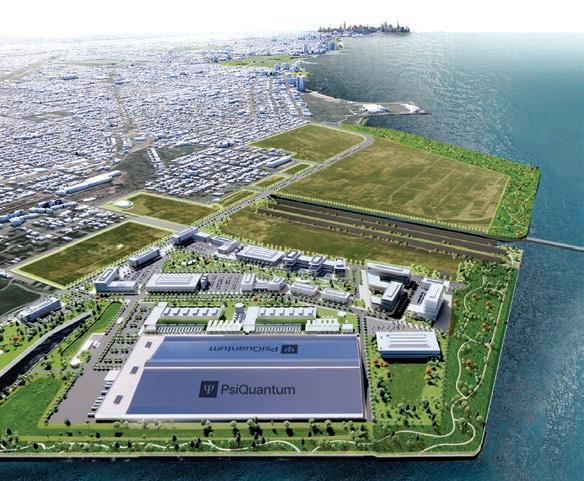
Share of available space across the suburbs wrapped up the first half of 2024 at a new all-time high
It's been four years since the COVID-19 pandemic and the rise of remote work began drubbing suburban office landlords with weak demand and surging vacancy. They're still waiting for the beatdown to end.
The share of available office space across the suburbs wrapped up the first half of 2024 at a new all-time high of 31.3%, according to data from real estate services firm Jones Lang LaSalle. The vacancy rate is up from 28.9% one year ago and 22.1% at the beginning of the public health crisis, and has hit new record highs for 14 consecutive quarters.
The numbers tell the same story that office building owners have been longing to put behind them: Companies are cutting back on workspace with fewer people regularly in the office.
The attrition has cost the suburbs nearly 4 million square feet of office tenants since the beginning of 2020, JLL data shows. That's roughly 8% more than the suburban office space reduction from the beginning of 2008 to the end of 2010 when the Great Recession hammered the market, according to the brokerage.
Combined with two years of rising interest rates, the soft demand has pummeled property values and fueled a historic wave of foreclosures and other distress as many landlords grapple with maturing debt.
"What's happening in the suburbs is a big process of resetting the market," said JLL International Director Andrea Van Gelder, who negotiates leases on behalf of tenants. "This process is going to take a while."
The slow burning off of longterm office leases has prolonged the pandemic-fueled pain for office owners, a contrast to commercial property sectors like retail and hotels that suffered more intense initial blows from the crisis but have seen steadily recovering demand.
Even though many companies have stronger conviction about how much office space they need for their post-COVID workplace usage, it's still far from clear how much more space-shedding is ahead and what that means for the economics of owning an office property. That lack of clarity muddies what many office buildings are worth — particularly with a number of them now formally or effectively controlled by lenders — making it difficult for owners and tenants to agree on leasing terms, Van Gelder said.
"It's kind of paralyzing lenders and receivers and owners because we really don't have good examples of where (capitalization) rates are," she said, referring to the income that a property owner expects to generate relative to the building's market value.

By Danny Ecker
cupied space compared with the prior period, fell by about 180,000 square feet during the second quarter, according to JLL.
Two cases pushing that number down came from corporate changes rather than companies adapting to new remote work patterns. Medical equipment maker Vyaire vacated 63,000 square feet at its office building in Mettawa after filing for Chapter 11 bankruptcy protection last month, JLL data shows. And Advocate Aurora Health formally left behind 185,000 square feet in Downers Grove, a move tied to its merger with Charlotte, N.C.based Atrium Health, according to the brokerage.
Recent leasing activity also underscored the downshift in suburban office demand. In a severe case, insurance giant Aon told employees it is moving its north suburban office from Lincolnshire to Bannockburn, a move that sources said would take the company from more than 600,000 square feet down to about 40,000 square feet.
In the biggest suburban office lease in more than two years, fleet management company Wheels subleased more than 200,000 square feet from Zurich North America at the insurance company's headquarters in Schaumburg. But that move will consolidate the suburban offices of Wheels, Donlen and LeasePlan USA — which are now all part of the same company — leaving more available office space in its wake.
Van Gelder said leases that are getting signed are overwhelmingly at newer and more recently updated properties, she said, a continuation of the so-called "flight to quality" that has dominated the post-COVID market as companies look to encourage employees to come to the office.
Wheels' deal at the Zurich property and Aon's impending lease at Bannockburn Corporate Center highlight that trend, she said. "The nicest projects are the fullest and claiming the highest rents."
Redevelopment of less competitive office properties into other uses like warehouses, data centers or residential buildings could also help curb the vacancy rate increases, though financing and winning public approval for such projects remain hurdles.
With few non-distressed buildings changing hands over the past couple years, entities controlling office properties may be unsure of what their buildings
are worth and hesitant to make long-term capital commitments to tenants, Van Gelder said. "That's the biggest stumbling block right now for the suburbs."
Move-outs outpacing moveins also continues to be a thorny issue for landlords. Net absorption, which measures the change in the amount of leased and oc-
The office complex that Aon is leaving behind at 4 Overlook Point in Lincolnshire is one of the latest redevelopment candidates to hit the market. Officials from the village of Lincolnshire said recently they are not interested in an industrial redevelopment for the 31-acre property in the heart of the Lincolnshire Corporate Center campus, but envision a mix of uses that could include housing, restaurants and entertainment.







chicagosfoodbank.org/crains


By Jon Asplund
Chicago’s major academic medical centers top the local rankings in U.S. News & World Report’s 2023-2024 Best Hospitals report, with Northwestern Memorial Hospital and Rush University Medical Center topping the metro area and statewide list and the University of Chicago Medical Center just behind.
Both Northwestern and Rush belong to this year’s honor roll of hospitals in the nation recognized for their exceptional performance across specialties, procedures and conditions. For Northwestern, it’s the 13th consecutive honor roll year. For Rush, it’s the fifth straight year.
Of 20 procedures and conditions, Northwestern ranked “high performing” in all categories, while Rush earned high performing ratings in 18 and UChicago Medical Center was considered high performing in 16.
“Our continuous recognition would not be achieved if not for the dedication and commitment made each and every day by our physicians, nurses and staff to providing world-class compassionate care to our patients,” Dr. Howard Chrisman, president and chief executive officer of Northwestern Memorial HealthCare, said in a statement. “Driven by our patients first mission, we strive to be better by any measure that has a positive impact on our delivery of care and patient outcomes.”
“Being on the honor roll for the first couple years was exciting, but with five straight years, we know we’ve really earned our spot,” said Dr. Paul Casey, senior vice president and chief medical officer for Rush.
Casey said he was particularly proud that, in most specialties, Rush shows continued improvement in the largely data-driven ratings from U.S. News. For example, its rank in cardiology a few years back was 34th, and now it is 12th in the nation. And for cancer,
especially

in which the health system recently began partnering with MD Anderson, the rankings have moved up over five years from 48th in the nation to 29th.
“The focus, though, is not on the ratings or recognition, it is on improving care and safety, and the ratings will follow,” Casey said.
‘Transformation
He said Rush has been on a “lean transformation journey,” which includes every aspect of the care team, instituting staff safety huddles throughout the three-hospital system and its outpatient centers, and making quality improvement and patient experience part of the culture.
Overall, Rush’s three hospitals — including Rush Copley Medical Center and Rush Oak Park Hospital — earned high performing designations for a total of 26 adult specialties, conditions and procedures.
At Northwestern Medicine, many of the system’s other hospitals fared well in state and
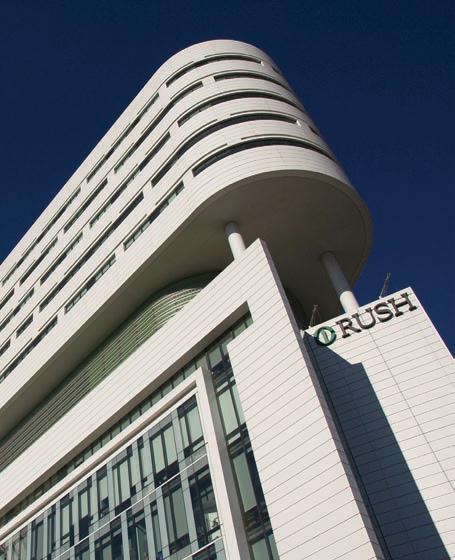
For example, Northwestern Medicine Central DuPage Hospital is ranked No. 7, Lake Forest Hospital is tied at No. 8, and the system’s hospitals in Huntley and Woodstock, combined, are ranked No. 13.
At UChicago Medicine, having the top cancer program in the state and the 12th in the country is one huge distinction, particularly as the health system builds its mammoth free-standing cancer center on its Hyde Park campus.
“Given the cancer center’s strategic priority, it is good to show that that care is being met with success in our programs as well,” said Dr. Tom Spiegel, vice president and health system chief quality officer at the University of Chicago Medicine.
“When you look at the U.S. News rankings, they concentrate on both outcomes — through riskadjusted survival rates — and at appropriate discharging patients to home,” Spiegel said. “We take a very wholistic approach to the
discharging patients into their home setting and providing the resources to keep them well outside the hospital.”
“When we talk about readmissions, we know it has all to do with the resources that we provide to patients when they leave,” he said. Ensuring access to outpatient care and social services makes all the difference, he added.
Outpatient care is also important for another aspect of running a health system these days, the ongoing issue of a tight labor market.
“It’s not just a temporary labor crunch,” Spiegel said. “It is the new reality. So we have to provide the smartest, most efficient ways to provide exceptional care.”
He said that really concentrating on a multidisciplinary approach to care and ensuring that the outpatient network serves patients well is key to dealing with fewer care providers.
“And the rankings, like U.S. News, are starting to recognize the importance of outpatient care and
steadily increasing the amount of outpatient metrics they study,” he said. “It used to be much more focused on inpatient stays and people over the age of 65, with Medicare data, but that can’t give the whole picture.”
Among the other Chicago-area hospitals to receive recognition was Shirley Ryan AbilityLab, which tops the list of rehabilitation hospitals in the nation for an astonishing 34th year in a row.
AbilityLab said it is the only hospital of any kind to hold this distinction.
“When we continue to do great work the world continues to notice, and we are honored by this and many other external accolades,” Dr. Pablo Celnik, Shirley Ryan AbilityLab CEO, said in a press release. “In evaluating our achievements, we look to the more than 50,000 patients we serve every year. Their success is our success, and their outcomes are made possible by our team, which is 2,700 people strong. We remain committed to advancing rehabilitation science and care — and to advancing human ability.”
Beyond the top three acute care hospitals, the other Chicago-area hospitals to make the list, are from highest to lowest rank: Advocate Christ Medical Center; Endeavor Health NorthShore hospitals; Advocate Lutheran General Hospital; Northwestern Medicine Central DuPage Hospital; Advocate Good Shepherd Hospital; Loyola University Medical Center; Northwestern Medicine Lake Forest Hospital; Endeavor Health Edward Hospital; Northwestern Medicine McHenry, Huntley and Woodstock hospitals; Northwestern Medicine Palos Hospital; Advocate Good Samaritan Hospital; Endeavor Health Elmhurst Hospital; Advocate Trinity Hospital; Silver Cross Hospital; Mount Sinai Hospital; Advocate Condell Medical Center and Community Hospital in Munster, Ind.
By Jack Grieve
The city of Chicago on July 12 denied a permit request for a highly anticipated open-water swim in the Chicago River, but the September event could still happen under an alternative plan.
Five hundred people were expected to participate in the organized swim, slated for the early morning of Sept. 22, on a course looping the main stem of the downtown river corridor between State Street and Wolf Point. However, city officials threw a wrench in those plans earlier this month when they denied organizers’ request for a permit, citing “significant safety concerns.”
A statement from the Chicago Department of Transportation ac-
knowledged the “positive nature” of the swim but said a review from multiple city departments, including the Chicago Fire Department and Chicago Police Department, identified safety issues for participants, first responders and the general public.
Still, plans for the swim have not completely dried up. CDOT said “the applicant was offered an alternative route that allows the event to proceed while ensuring high standards of safety for all participants and the effective allocation of city resources.”
CDOT did not respond to a request from Crain’s for more details about the counterproposal, nor did event organizers offer more information. It is unclear what changes the city sought from the
original plans.
Doug McConnell, co-founder of A Long Swim, the Barringtonbased nonprofit organizing the event, said in a written statement “our goal remains to hold the swim on September 22, 2024, as scheduled.”
“While we are disappointed, we are hopeful that we will have the opportunity to address CDOT’s concerns and demonstrate the strength of our comprehensive safety plan,” McConnell added. Green light from Coast Guard
Swim organizers have pitched the plunge, which received a green light from the U.S. Coast Guard in April, as a celebration of the waterway’s environmental turnaround. It would highlight the
decades-long river cleanup efforts of the Metropolitan Water Reclamation District of Greater Chicago and groups like Friends of the Chicago River. The swim would mark the revival of the long-dormant open-water swims that were commonplace on the Chicago River in the early 1900s.
A Long Swim says it has raised about $2 million for amyotrophic lateral sclerosis, or ALS, research at Northwestern University’s Feinberg School of Medicine. The planned Chicago event also has a philanthropic element to it: Participants who swim one mile on the course are expected to raise a minimum of $1,000 each for the nonprofit, with those swimming two miles expected to raise $1,500 each. Proceeds would go to ALS
research funding and learn-toswim programs for underserved communities in the city.
Under the original plans, organizers said they would closely monitor water quality levels ahead of the swim. After decades of unsafe contamination levels, the Chicago River is now safe for swimming “most of the time,” McConnell said, but even he acknowledged that heavy storms and other extenuating factors can render the conditions less safe.
Assuming the water quality is up to standard come Sept. 22, the swim would start at 6:45 a.m. and end with a hard cutoff at 9 a.m. — intentionally early to reduce the event’s effect on regularly scheduled river activity.
‘This episode is a wake-up call for the auto industry, and a
By John Huetter, Automotive News
Anderson Economic Group estimated dealerships lost 56,200 new-vehicle sales and more than $1 billion between June 19 and July 15 because of the CDK Global cyberattacks and subsequent software outages.
The consulting firm, which also conducted loss analyses after the 2023 and 2019 UAW strikes, had projected July 1 dealerships would lose $944 million between June 19 and July 6.
“The small increase is due to a somewhat larger sales loss revealed by now-available June sales data, the actual duration of the outage, and a slight downward adjustment in the estimated lost service and used car business,” AEG wrote in a news release July 15.
‘Cyber ransom event’
Hoffman Estaes-based CDK suffered at least two cyberattacks June 19 in what it called a “cyber ransom event.” It took its software offline as a precaution, forcing dealerships to find alternative ways to do business. On June 26, CDK said it had restored service to a test group of retailers and began bringing others online; by July 2, CDK announced “substantially all dealer connec-
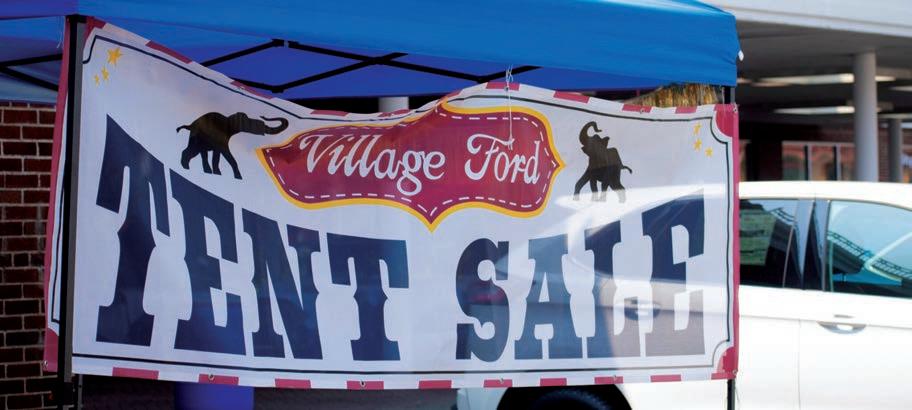
tions” to the DMS had been restored as of that morning.
Other CDK software followed, and the company ultimately wrapped up its restoration earlier than July 15 though some thirdparty software companies with programs integrated with the DMS provider might not have brought those tools back online yet.
“All major applications are now available,” CDK said in a statement July 11. “We are thankful to our customers, partners and employees for their partnership.”
Allan Liska, a threat analyst at Recorded Future, attributed the CDK cyberattack to the hacking group BlackSuit, according to a Bloomberg June 24 report.
On June 21, about 387 bitcoin worth more than $25 million was sent to an “address assessed by TRM Labs to be controlled by the ransomware group BlackSuit,” according to a statement from blockchain intelligence firm TRM Labs.
Three unidentified sources said CDK likely made that payment, CNN reported July 11.
CDK did not responded to a July 15 email request for comment on the AEG analysis and CNN report.
AEG’s latest $1.02 billion loss calculation factored in income dealers theoretically lost from new-vehicle sales and diminished service and parts revenue during the time the CDK outage hindered operations. The consulting firm assumed most customers who encountered a delay in servicing their car because of the CDK out-
age still used the dealership and completed the deal. It didn’t count those temporary losses toward the final number. However, transactions where the dealership lost the business entirely or saw the customer postponing the sale, service or parts work indefinitely were treated as losses for the purposes of the AEG report.
“This has been a painful experience for dealerships and customers,” Max Melstrom, a member of the AEG loss estimation team, said in a statement. “The sales data for June confirm what we were anticipating two weeks ago.”
The actual financial hit to dealerships might have been higher than $1.02 billion. AEG said its analysis didn’t include a variety of other lossers retailers might have suffered, including litigation, reputational hits and incentive payments.
“This episode is a wake-up call for the auto industry, and a warning to all others,” AEG CEO Patrick Anderson said in a statement. He said any companies using automation and centralized software, “which means nearly all businesses,” run the risk of a vendor being hacked — “and the losses caused by an outage can escalate quickly.”
John Huetter writes for Crain’s sister site Automotive News.






Apparently, it’s the season for dramatic moves and big-picture thinking.
And no, we’re not talking about the seismic shifts taking place on the presidential stage, as one campaign rebounds from a frightening assassination attempt and another throws the incumbent overboard in favor of a more youthful replacement.
Consequential pivots and swing-forthe-fences energy have been taking place much closer to home in the past week or so, as two prominent plans to remake vast swaths of the South and West sides make their debut.
First up: The next-generation owners of the United Center lifted the veil on their plan to undertake a $7 billion transformation of the property around the Near West Side arena, a blueprint that would redraw 55 acres surrounding the venue with a megadevelopment that includes a new 6,000-seat music hall, hotel and retail buildings, public open space and thousands of apartments.
Chicago Bulls President and CEO Michael Reinsdorf and Chicago Blackhawks Chairman Danny Wirtz touted their plan, dubbed the 1901 Project, as the largest-ever private investment on the city’s West Side. Their vision includes a wide-ranging, 10year redevelopment of the parking lots encircling the stadium at 1901 W. Madison St. as well as nearby sites they control.
The 14 million-square-foot proposal would fulfill the team owners’ long-term aspiration of making the arena the centerpiece of a broader mixed-use campus, in line with modern professional sports ven-
ues that anchor entertainment districts.
Days later, the Pritzker administration as well as corporate and academic partners trumpeted a plan to turn the long-dormant U.S. Steel South Works site along Chicago’s far southern lakefront into a technological center that promises to make Chicago one of the global capitals of next-generation quantum computing. The goal: attracting more than $20 billion in private and public investment and, ultimately, creating thousands of jobs.
South Works will be home to a 128-acre campus anchored by PsiQuantum, a Silicon Valley startup with ambitious plans to build the world’s largest quantum computer. PsiQuantum’s facility will be about 300,000 square feet and employ up to 150 people within five years. The centerpiece of the project is a unique super-cold computing facility where blast furnaces once stood.
As Crain’s Danny Ecker pointed out in a July 26 analysis, both projects have a significant advantage over other planned megadevelopments elsewhere in the city — namely, that each has its own anchor user lined up, creating their own momentum, and that sets the stage for more real estate investors to follow into neighborhoods where they haven’t been active before.
And as Ecker further explains, the two development announcements come after years in which City Hall has labored to kickstart real estate investment in areas that face similar challenges to neighborhoods such as, say, Calumet Heights and South Chicago, which stand to benefit from the quantum plan, or East Garfield Park and Lawndale, which could see a spillover effect
from the 1901 Project. But the level of investment being discussed for the United Center and South Works is an order of magnitude greater than the city has seen in years — and along with that opportunity comes some reason for caution.
With Gov. J.B. Pritzker, Mayor Brandon Johnson, Cook County Board President Toni Preckwinkle and the two City Council members whose wards overlap the site all on board with the various subsidies contemplated in the South Works plan, the necessary legislative OKs and zoning approvals are likely. But, as Crain’s Justin Laurence reports, local community groups argue a community benefits agreement that secures their ability to share in the prosperity should be approved as well — though attaching such strings to plans to revive a parcel that’s sat frozen in time for decades seems ill-advised, to put it mildly.
The City Council will also surely want to know more about the economic incentive package they’ll be asked to approve and when the city can expect to receive a return on that investment beyond the immediate construction jobs created to build the site in coming years, so it will be incumbent on Team Johnson to manage those expectations accordingly.
At South Works in particular, which has seen more than one failed attempt at revivification, the stakes are especially high. Elected officials should do everything in their power to quell factional infighting that could delay swift movement on a project that has statewide significance, not just as a real estate play but as an economic development juggernaut that could put Illinois
on the quantum computing map globally.
The challenge, particularly at South Works, will be making sure the coming changes improve the quality of life and build wealth for existing residents in the area, said Dave Doig, whose Chicago Neighborhood Initiatives organization has led development of projects that have revitalized the Pullman neighborhood over the past decade.
“It’s going to take some intentionality. It’s not just going to happen,” he said in an interview with Crain’s. “The fear is that this just becomes an island — people go there to work and then leave, and nobody benefits — so I think there’s going to have to be some real planning and intentionality around making sure that those linkages (are made) with residential, retail, jobs. . . .I’m sure there are hundreds of city-owned vacant lots that dot this area.”
And both the South Works and United Center projects give City Hall an opportunity to focus resources and attention on nearby neighborhoods rather than trying to create new anchor projects from scratch. One example: using Neighborhood Opportunity Fund grants — money from developers that paid to build more dense downtown projects — to help revive vacant cityowned lots or boost entrepreneurs in the vicinity of both sites rather than spreading money more thinly across the city.
“They shouldn’t just be seen as little dots on the map, and that’s the only planning that happens,” as city Planning Department veteran Eleanor Gorski, now CEO of the Chicago Architecture Center, tells Crain’s. “These are dots with ripples, and the city needs to step up and produce the ripples.”
There is no crisis with Chicago’s pension funds.
At least not now. But indications are that a crisis is looming large when it comes to the ability of Chicago’s pension funds to pay benefits to current and future annuitants. Unfortunately, it’s the nature of government not to act until the very last moment, but in this case, it will be too late. We will likely see a situation whereby one of the four direct city pension funds — Fire, Laborers, Municipal Employees or Police — runs out of money and a monthly check written by one of these funds to its retirees is significantly less. Not the kind of surprise that anyone enjoys. And that’s when the crisis occurs.
Recently, it was reported that the funded levels of the pension funds again moved in the wrong direction. As was widely reported, the standard measure of a pension fund’s health, the “funded ratio” — the extent to
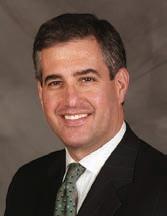
which the pensions are funded — of the four was 26% at the end of 2023. This is down from 28% in 2022. Conventional wisdom states that the funded ratio of a public pension fund should be at least 80%, and there are many across the country that are closer to 90% and higher. Funding for a private company’s pension is required by law to be at 100%.
Yet, in 2023, the stock market, in which each of the funds is heavily invested, returned a whopping 26.3% as per the S&P 500. And the average annual S&P return for the previous 10 years has been 13.8%. What’s worse is that there seems to be no
outrage at this dichotomy — that market investment returns are significantly positive and the health of Chicago’s pensions continues to deteriorate — from any sector of government, nor from the pension funds, nor even from the annuitants themselves.
Keep in mind that the intent of 2010 Illinois legislation calling for an increasing contribution to the pension funds from the city starting in 2016, when the pensions were funded at 30%, was for the pensions to be funded at 90% by 2045. The way that the contribution was and continues to be funded is based on significant increases in property taxes. That’s why all Chicagoans saw their property taxes increase by at least 20% back in 2016. Yet, despite the increases that amount to millions more dollars going to the pension funds each year since 2016, the funded ratio continues to drop. In 2005, it was 64%. In 2010, it was 49%, and 26% in
2023. So 90% in 2045? It isn’t going to happen. By the way, the recent funded ratios translate into city debt of $37.2 billion in 2023, up from $35.4 billion in 2022.
Why is there no sense of outrage among all parties? Moreover, also missing is a demonstrated desire to fix this situation.
So why is this happening in the first place? Certainly, it’s not due to market returns. However, it could be partially ascribable to the investment returns of the four city pension funds themselves — in other words, specifically how are they invested? In 2023, the firefighters' pension fund, which had the best returns among the four funds, earned 13.9%, about half of the S&P return of 26.3% in 2023. That’s part of the problem.
Could it be that the amount of the contributions being made annually by the city to the pension funds is inadequate? Many years ago, that was true, but as mentioned earlier,
In an article published July 11, Crain’s Chicago Business detailed the status of three significant local development projects, including Lincoln Yards. We want to thank Crain’s for keeping tabs on one of Chicago’s most dynamic industries that is critical to the city’s economic development. They rightly pointed out that today’s real estate market may have changed some of the timing and elements of Lincoln Yards, but it does not change our resolve to bring it to life.
Chicago is one of the greatest cities in the world, and the projects we are invested in will only enhance that standing. Sterling Bay was born in Chicago, and we live and work here every day. Everything we do supports a longterm vision for the market and the growth of Chicago’s neighborhoods.
Our vision for Lincoln Yards is clear and exciting. It will not happen overnight, but we have more than enough patience and resolve to make it happen.
Anyone who doubts this should look no further than the West Loop and Fulton Market. These neighborhoods are vibrant districts bustling with shops, corporate headquarters, acclaimed restaurants and stunning residences that have boosted development for miles around. Just imagine what is in store for Lincoln Yards.
Our investors, financial partners and lenders have held a strong belief in this vision, and we continue to work with leaders in the industry to overcome global economic challenges that have nothing to do with Chicago. As we continue forward with Lincoln Yards, the next step is to recapitalize the project and consolidate ownership of the
contributions — yes, as funded by property taxes — are now at or close to the ARC, or the “actuarially required contribution.”
Could it be the level of benefits that annuitants are paid? Regardless, nothing can be done to diminish public pension benefits in the state of Illinois, as has been affirmed by the Illinois Supreme Court.
Nevertheless, should this situation not be fixed, there is, based upon these data, more likelihood now that one or more of the pension funds approaches insolvency. Even now, we know that at least one fund is going down the slippery slope of selling assets to pay for benefits. And this, dear readers, is the hardest part of writing this article. We just don’t know what happens next. If the city is forced to reach into its pocket even more to pay the annuitants’ benefits in full, it will have to significantly raise property taxes even further, and Chicago’s property taxes are already among the highest of any major city in the nation. What are those implications? I shudder to think. But for certain, we will then have a crisis when it comes to Chicago’s pension funds.
development. We expect to accomplish that this year, and our goal remains to begin critical infrastructure work as quickly as possible.
We will also rely on our partnership with the Johnson administration, which has correctly identified that the only sustainable path out of Chicago’s fiscal challenges is through economic development and growth. The multiple billions of dollars of annual economic output from a development like Lincoln Yards
will be critical to facing these challenges, stimulating growth and creating economic opportunities for all Chicagoans. This is a cyclical business, and today’s challenges will subside. Chicago was not built overnight, and we will continue to be bold in pursuing our transformational vision for Lincoln Yards. We intend to see it through to completion.
ANDY GLOOR CEO

To place your listing, visit www.chicagobusiness.com/peoplemoves or, for more information, contact Debora Stein at 917.226.5470 / dstein@crain.com
Lamar Johnson Collaborative, Chicago
Lamar Johnson Collaborative (LJC) welcomes Lisa Dziekan as Principal, Economic Development. Most recently, Lisa served as Senior Vice President for World Business Chicago (WBC). Dziekan brings extensive experience in strategically growing Public-Private Partnerships (PPPs) to drive economic development. In her new role, Dziekan will lead initiatives and build relationships to propel the firm’s growth and impact across Chicagoland and other markets for LJC, Clayco, and its subsidiaries.
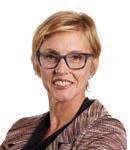
Centric Consulting, Chicago
Jeff Ehman has been promoted to Partner/ Director within Centric Consulting’s Chicago practice. With over 2 decades of experience, Jeff blends agility and precision to deliver comprehensive strategic transformations that achieve results for Fortune 500 clients. His work covers many industries, with notable CPG sector and M&A achievements. As Partner, he’ll continue to lead and grow Centric’s Chicago team of highcaliber consultants, while forging strong collaborations with local business leaders.

Wintrust Financial Corporation, Rosemont
Wintrust Financial Corp., a financial services holding company based in Rosemont, Illinois, with more than 170 locations across Illinois, Indiana, Wisconsin, and Florida is pleased to announce two promotions.
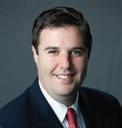
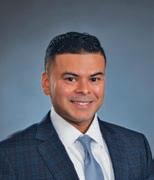
Lamar Johnson Collaborative, Chicago
Elaine Fitzgerald joins Lamar Johnson Collaborative (LJC) as Principal and Senior Specification Writer in its Chicago office. Focused on strengthening LJC’s virtual design/construction and project delivery processes, Fitzgerald brings more than 30 years of industry expertise in contract documents, group leadership and motivating teams. Fitzgerald earned her Master of Architecture degree from the University of Illinois Chicago.
Live Oak Bank, Chicago


Carole Robertson Center for Learning, Chicago
Yolanda Luna-Mroz has joined the Carole Robertson Center for Learning as Vice President of Youth Development. Yolanda brings more than 20 years of leadership experience in elementary and middle school education, serving most recently as Chief Programs Officer at High Jump and as Principal at Decatur Classical School in Chicago. In her new role, she leads strategic efforts to deepen the Center’s youth development program impact, elevate program quality, and ensure long-term fiscal sustainability.

Dan Stiles was promoted to SVP, Senior Commercial Banker, Commercial Banking at Libertyville Bank & Trust Company, N.A. Dan joined Wintrust in 2013. Umar Riaz was promoted to SVP, Lending, Commercial Real Estate at Old Plank Trail Community Bank, N.A. Umar joined Wintrust in 2014.

Croke Fairchild Duarte & Beres LLC, Chicago

Garcia Dussard is a Senior Loan Officer based in Chicago on the Small Business Banking Team at Live Oak Bank. In this role, Garcia is responsible for helping small and mediumsized business owners in Chicago and the surrounding suburbs access capital via the SBA for business acquisitions, partner buyouts, real estate mortgages and equipment loans. Garcia has been in the banking industry for over 25 years and worked at several major US banks prior to his role at Live Oak.

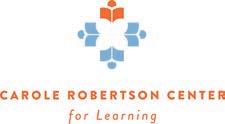
The Morton Arboretum, Lisle
Skender, Chicago
Skender, one of the nation’s top building contractors, welcomes Matt Nemshick as Director of Data Center Accounts. In this new role, Nemshick will assist in expanding Skender’s footprint in mission-critical construction, which comprises essential, always-on facilities such as data centers and other high-tech infrastructure. He joins Skender with 17 years of experience in the construction industry and also serves as Board Ambassador and Past President of the veteran support charity SALUTE, Inc.

Derek Stovall-Leonard, MBA, joined The Morton Arboretum as Chief Financial Officer on July 24. He provides strategic direction for the Arboretum’s financial activities, facilities, information technology, and sustainability initiatives. He was most recently CFO and Executive Director of Converge Consulting at Forefront. He will play a lead role in forwarding the Arboretum’s vision of a greener, healthier, more beautiful world where people and trees thrive together.
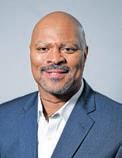
Croke Fairchild Duarte & Beres welcomes partners Thomas Kilbride and Adam Vaught to the firm’s litigation group. Former Chief Justice of the Illinois Supreme Court Tom Kilbride oversaw numerous landmark cases and led efforts to modernize the state judiciary and expand Illinoisans’ access to justice. Noted appellate lawyer Adam Vaught began his career as a law clerk and Counselor to Justice Kilbride before moving into private practice, where he spent 10 years handling complex and highstakes litigation for a host of leading business and public sector clients. Kilbride and Vaught will develop a dedicated appellate court practice, focusing their work on expanding the firm’s leadership in addressing clients’ most complex and novel legal issues.

Chicago
Michael Zalay has been promoted from income principal to equity principal at Much. Zalay, chair of the Corporate & Finance group, will bring a knowledgeable, fresh perspective as part of the firm’s next generation of leadership. In his legal practice, Zalay is an accomplished corporate attorney. Clients ranging from established businesses to emerging startups rely on him to lead M&A deals and complex transactions as well as to serve as de facto general counsel.


Burke, Warren, MacKay & Serritella, P.C., Chicago
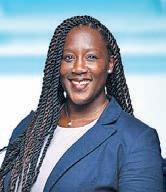
Jayne Bart-Plange joined Burke, Warren, MacKay & Serritella as a Partner. As a civil litigation and trial attorney, Jayne has tried high-value, complex cases and successfully argued dispositive motions at the State and Federal court level. Jayne brings her unique insights, work ethic, and passion to every matter and is excited to grow her commercial practice at Burke Warren. Jayne attended the University of Missouri Kansas City School of Law and received her B.A. from Loyola University Chicago.

Poplar Homes, Chicago
Sean Story has joined Poplar Homes as Executive Vice President to oversee leadership of its multifamily management and leasing portfolio. Story will build on the firm’s solid foundation of strong relationships and efficient operations established by legacy company 33 Realty to scale Poplar’s multifamily division nationwide. He will also have oversight across leasing, property management, maintenance, marketing, and business development.

Croke Fairchild Duarte & Beres LLC, Chicago
Croke Fairchild Duarte & Beres welcomes Jenna DePorre as an associate in the firm’s venture capital practice group. Jenna primarily represents emerging companies, founders and investors in a variety of venture capital transactions and general corporate matters, including equity and debt financings, securities filings, company formations, corporate governance and exit opportunities.
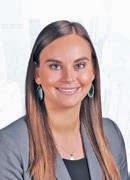
Leadership Greater Chicago, Chicago
Leadership Greater Chicago (LGC), the region’s premier civic leadership development organization, announces the election of Melissa Y. Washington, Senior Vice President of Customer Operations and Strategic Initiatives at ComEd as its new Board Chair and welcomes John C. Robak former Chairman and CEO of Greeley and Hansen to its Board of Directors. Washington will guide the board in strategy, governance and fund development, collaborating with CEO Myetie Hamilton to continue the legacy of driving transformative civic impact across the Greater Chicago region. Robak’s extensive experience in philanthropy and civic engagement will bolster LGC’s efforts to develop a strong pipeline of civic leaders to shape an equitable future for our Region.




Parts Town Unlimited, Addison
Jamie Head joins Parts Town Unlimited, the parent company of Parts Town, as the group’s Chief Information Officer. Jamie brings over 20 years of global experience, specializing in leading and partnering across various digital transformations and capability building for growth and efficiency. Jamie will be a key partner in realizing Parts Town Unlimited’s goal to become the global leader in high-tech distribution of mission critical replacement parts across several categories.

Mesirow mesirow.com/home
Mesirow, an independent, employee-owned financial services firm, announced the launch of its outsourced Fiduciary Partnership Services at Capital Group, home of American Funds®. This integrated, outsourced fiduciary program is overseen by Mesirow Fiduciary Solutions, which delivers a full suite of fiduciary services to recordkeepers, sponsors, advisors and participants through easy-to-understand investment programs.
Capital Group will be Mesirow’s 25th recordkeeper integration since the group’s inception in 2006. With this newest launch, Mesirow will provide ERISA 3(21) and 3(38) Fiduciary Partnership Services to plan sponsors and their advisors that use Capital Group’s turnkey products, RecordkeeperDirect® and PlanPremier®.

The Baldwin Group baldwin.com
Rosenthal Brothers, a Baldwin Risk Partner and an industry leader within the real estate insurance sector, announced it will rebrand to The Baldwin Group.



Since becoming a Baldwin Risk Partner in 2020, Rosenthal Brothers has been able to enhance its existing client relationships, attract new clients and extend its impact across Chicago and the Midwest. Now as The Baldwin Group, Rosenthal Brothers will continue to provide innovative solutions, deep expertise and excellent service to clients while leveraging the full suite of risk management, insurance, employee benefits and wealth management services from the network of nearly 40 regional brands across the country which will also be transitioning to The Baldwin Group in the coming year.
$1.0 billion
The amount of public money the team requested for a new


$1.5 billion
The amount of public money the team requested for a new stadium


Chicago fans of professional sports are just as likely to talk about their favorite teams’ stadiums as they are about those teams’ performances these days.
e Chicago Bears have pitched a $3.2 billion proposal for a new domed stadium on the lakefront. Funding for the plan would include more than $2 billion from the Bears and a $300 million loan from the NFL. e remainder would come from public nancing that includes using the city’s existing 2% hotel tax to back bonds issued by the Illinois Sports Facilities Author-
ity, and other sources. Taxpayers would pay $900 million in upfront costs toward the stadium, through the ISFA-issued bonds.
An additional $1.5 billion in the proposal would be spent on infrastructure improvement around the stadium.
At the same time, the Chicago White Sox are looking for $1 billion in public funding for a new $2 billion baseball stadium in e 78, a planned megadevelopment site that will create a new neighborhood south of downtown.
Given both the city of Chicago and the state of Illinois budgets — Chicago has the
second-largest debt load of any U.S. city, and Illinois is in the top ve among states nationwide — the path to publicly funded stadiums is going to be fraught. Discussions in Chicago have some Windy City speci cs, such as concerns about building a new stadium on the lakefront. But at their core, the questions raised in this debate are the same across the country. Is publiclynancing stadiums and arenas good for a city? Is this the best way to be the steward of a municipality’s nances? What are the
See STADIUMS on Page 12

|
By Margaret Littman
Chicago has the secondlargest debt load of any U.S. city, and Illinois is in the top ve among states nationwide.
The path to publicly funded stadiums is going to be fraught.

costs of not doing a deal and risking losing a team? How can a deal be made in the best interests of taxpayers?
e answers, as always, are, “It depends.”
It isn’t unheard of for separate teams to vie for public funding for separate stadiums at the same time. Both the NFL’s Kansas City Chiefs and MLB’s Kansas City Royals recently asked for tax incentives to leave their current Missouri locations to build new stadiums in Kansas after Missouri voters in April rejected a sales tax increase to nance
move a home game to accommodate the Riot Fest music festival in September.
Laura Ricketts purchased the Red Stars last year and brought Karen Leetzow, former chief legal ocer of the U.S. Soccer Federation, on as president. Ricketts and Leetzow have been vocal about wanting gender equity for public stadium nancing. “I’ve been extremely frustrated with how I’m having to advocate for things that the men have already gotten,” Leetzow says.
State Rep. Eva-Dina Delgado introduced HB 5841 to evaluate whether the ISFA is meeting equity goals.
In 2022, the Kansas City Current opened the rst soccer-speci c stadium for a women’s team. e $120
“It is kind of worrisome to never have had a committee meeting or a City Council meeting on it and no public hearings. There’s no place for people to say what they think.”
Chicago Ald. Scott Waguespack, 32nd
the developments.
But given the high pro le of Chicago’s teams and the added interest of the Chicago Red Stars soccer club to be part of any allocation of public funds for sports stadiums, local conversations are louder than a Stanley Cup playo crowd. e Red Stars of the National Women’s Soccer League have voiced their frustrations at SeatGeek Stadium in Bridgeview after being forced to
million facility was largely privately nanced.
“As a public policy position, we’ve taken the position that we will invest and give public taxpayer dollars to men’s teams, but we’ve never done the same for women’s teams,” Leetzow says. “Men’s teams have gotten a head start by about 50 years. e question for us as a culture is, are we going to do the same for women’s teams?” Leetzow be-
lieves that women’s teams can see the same valuation growth with the same “seed money” that men’s teams have received.
Neither stadium where the Bears or White Sox currently play is paid o . About $620 million in debt is still outstanding for the last Soldier Field renovation in 2003, with $50 million in debt still outstanding for Guaranteed Rate Field, which opened in 1991 and has been renovated twice since. Sports stadium nancing experts say this is not uncommon.
Because stadium-building booms happen about every 2530 years, it stands to reason that those with terms of more than two decades will still have debt on the books when they start to strategize for the next upgrade. According to a paper in the Journal of Policy Analysis & Management, more than 60 North American professional sports teams’ stadiums will be 30 years old or more by 2030, suggesting that this round of stadium upgrade wishes is right on time.
Where that puts Chicago stadium dreams, it’s hard to say, but evaluating what has happened in other cities can help. e overwhelming majority of the 36 stadiums that have been built or had major renovations since 2003 with price tags of more than $575 million (the original budgeted cost of the 2003 Soldier Field renovation) have done so
Do stadium projects bring a measurable economic bene t to a city?
Teams
with at least some public funding, based on Crain’s research. Nationwide, football stadiums tend to be the most expensive and baseball stadiums tend to be the most heavily nanced through tax bonds, according to the National Tax Journal. e selling points on the part of those teams were similar to those of the Bears and White Sox: When a municipality invests in a sports stadium, it boosts the local economy in terms of spending and job creation. Newer roofed or domed stadiums attract bigger events to town — possibly marquee events such as the Super Bowl — bringing in tourist dollars.
“Sports in our culture are very popular and hold some sway,” says Andrew Zimbalist, the Robert A. Woods Professor Emeritus of Economics at Smith College and an expert in stadium nancing, about how we got to this moment in time where such projects are often publicly funded. “Team owners are wealthy and have good connections. ey are large employers. All of these forces lean on politicians who care about re-election.”
Yet most economic research shows that stadiums, at least on paper, are not necessarily good investments. Time and again, stadiums fail to generate estimated economic boosts. In Cobb County outside Atlanta, Truist Park, home of the Atlanta Braves, is generally considered a success. e Battery Atlanta entertainment district is a model for other new stadiums,
with pedestrian-friendly restaurants, shops and a hotel.
But according to a report by John Charles Bradbury of Kennesaw State University, the project has resulted in an annual de cit of $12 million to $15 million, which he predicts will continue for the next two decades.
In general, stadiums shift economic activity; they don’t increase it. For example, if a family has $300 to spend on a White Sox game at the team’s proposed new stadium and dinner afterward in e 78, they likely won’t spend $300 on something else. And, if they have limited spending dollars, the city of Chicago would rather have them spend it in town rather than in suburban Arlington Heights, where the Bears had proposed building a new stadium before releasing plans for a lakeside stadium in Chicago. e structure of stadium deals varies so signi cantly that experts say it’s impossible to categorically state whether public funding is “good” or “bad.”
Former Nashville Mayor John Cooper supported the Tennessee Titans’ e orts to build a new $2.2 billion domed football stadium, in part, because the lease for the existing Nissan Stadium, signed in 1996, legally obligated the city to provide a “ rst-class” stadium until 2039. e Cooper administration calculated that upgrade obligation at between $1.75 billion and $1.95 bil-
See STADIUMS on Page 13
Good data is hard to come by and recent history suggests that sometimes it does spur growth, but other times it does not. Let’s look at two examples.



The



The amount of public money the team used to build the Chase Center
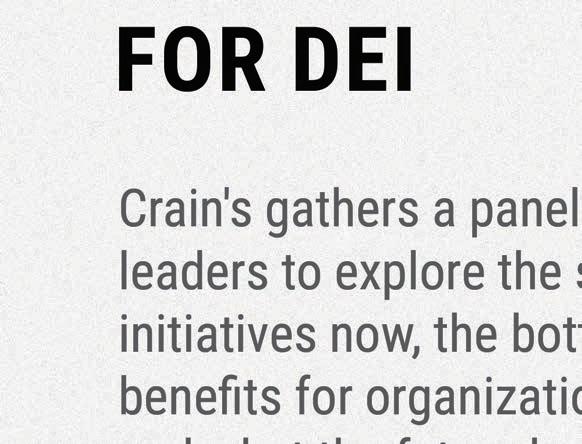

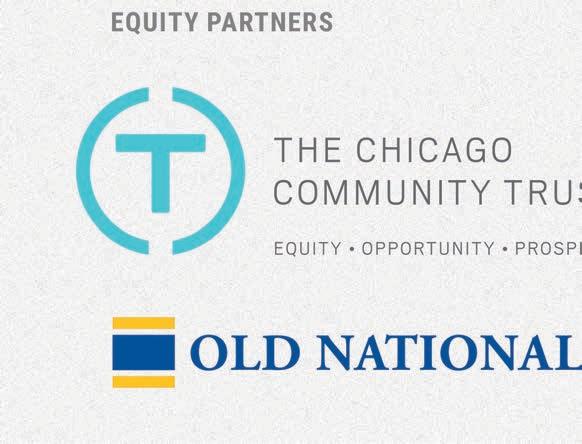












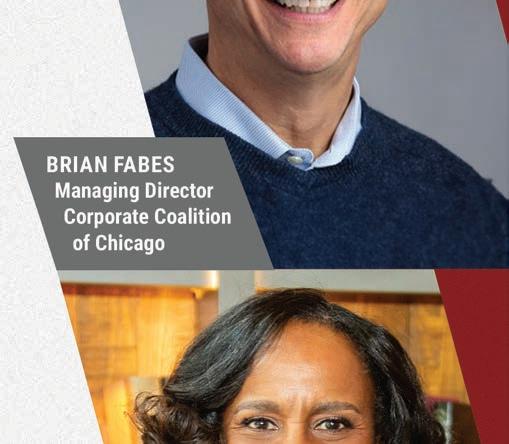
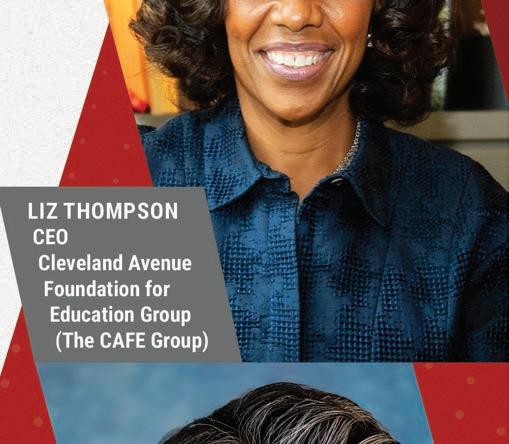

From Page 12
lion and felt the more fiscally prudent decision was to negotiate a deal for a new stadium, which is now under construction. Opponents thought the costs of the upgrades were inflated. But the Titans’ deal illustrates the importance of negotiating a good deal for the city in the future. The team’s new stadium is being funded, in part, with bonds backed by a hotel occupancy tax, as the Bears have proposed. In contrast, Geodis Park, the Nashville Soccer Club’s new home and the largest stadium for the sport in North America, was built entirely through private funding, at a total of $335 million.
Yet even privately funded stadiums can have public investment, largely for infrastructure like roads and improvements in the surrounding area. Zimbalist, the economist, notes that many cities use stadium deals to get investments they might not otherwise be able to obtain.
At SoFi Stadium, the new $5.5 billion privately funded home of the Los Angeles Rams and Los Angeles Chargers, the city of Inglewood says it will eventually repay about $250 million for infrastructure supporting the stadium but will not have to start reimbursement until tax revenues reach more than $25 million annually.
Timing too fast?
For many in Chicago, the pace of discussion around the Bears’ latest lakefront proposal, in particular, is moving too fast for the plan to be thoroughly evaluated.
“When we think about how long a neighborhood park can take, the years grocery stores take, the thought that a project of this scale could just pop up when all these other projects have to go through rigorous analyses just feels like jumping to the front of the line,” says Gin Kilgore, interim executive director of the nonprofit Friends of the Parks, which has concerns about building on the lakefront, wanting to keep it “open, clear and free.” These same concerns led to the filing of a lawsuit against filmmaker George Lucas that prompted him to move the development of the Lucas Museum of Narrative Art from Chicago to Los Angeles, as well as an ongoing debate on the construction of the Obama Presidential Center in Jackson Park.
“Everything’s been roughshod,” says Chicago Ald. Scott Waguespack, 32nd, who was surprised when Mayor Brandon Johnson voiced his support of the Bears’ proposal in April, and that the conversation has not yet been brought to the City Council.
Waguespack believes that there are possible deals that could be beneficial for taxpayers, with such infrastructure as train stations, sidewalks and green spaces for public use in The 78, or bridges and sidewalks on the lakefront near the Museum Campus. In June, he sent Johnson a four-page list of ques-
tions about the Bears’ proposal, coming from the perspective that the mayor’s job is to act in the best interests of the city. Waguespack says he has not heard back.
“The mayor is not looking at the whole picture of what is needed,” he says. “I think it is brilliant marketing. People get hooked on these teams whether you can afford to go to (games) or not. The job is to be the fiduciary for the city, and the mayor is not replying to questions.”
Waguespack and others in particular, have concerns about whether the job-creation numbers Johnson touts for the Bears’ proposed development (approximately 2,300 permanent city jobs and 4,600 permanent regional jobs) are not truly “new” jobs, but rather a reallocation of jobs.
Marc Ganis, founder and president of Sportscorp and a Chicago-based stadium consultant, calls those numbers “political blather.”
“It is kind of worrisome to never have had a committee meeting or a City Council meeting on it and no public hearings. There’s no place for people to say what they think,” Waguespack adds.
For decades, owners of sports teams have used the threat of relocation in order to receive funding. And sometimes, they follow through. MLB’s Atlanta Braves moved from the city to the suburbs, the NFL’s Oakland Raiders relocated to Las Vegas and the NHL’s Arizona Coyotes are heading to Salt Lake City. Ganis thinks it is highly unlikely that the Bears will leave the greater Chicago area, but sees the White Sox leaving as a larger possibility. The Sox’s lower-profile broadcast deal gives the team less incentive to stay in the major TV market.
In addition, Ganis envisions “any number” of possible incarnations for Guaranteed Rate Field should the Sox relocate, including new housing and parking lots and a possible stadium for both Major League Soccer’s Chicago Fire and the NWSL’s Red Stars.
He notes that Chicago has long been inconsistent in its funding of professional stadiums, with the Sox receiving public funding for their stadium and the Chicago Cubs’ ballpark privately funded by the Ricketts family.
Leaders in Springfield have indicated it will be difficult for teams to get state funding for these projects. Gov. J.B. Pritzker says they are “a non-starter,” and emphasized in a meeting with Bears President Kevin Warren earlier this month that any deal must be “good for taxpayers.” Illinois Senate President Don Harmon emphasized that the public has “next to no appetite” for public funding.
“We need to be willing to have courageous, informed conversations,” says Friends of the Parks’ Kilgore. “The big question is: Who does this really benefit? And, of course, if it was an easy question to answer, we would have answered it already.”

Team owners sometimes leverage the possibility of leaving town — either to other cities or suburbs or out of state entirely — in public stadium financing negotiations. It does happen, but not often. Here’s a look at some professional teams that have pulled up stakes.
The Athletics (MLB)
The organization will move from Oakland to a new stadium in las Vegas in 2028. The team will play in Sacramento from 2025 to 2027.
The team will move from Tempe, Ariz., to Salt lake City in
The team moved from San Diego to l .A.’s

By Margaret Littman
While most of the headlines around stadium nancing in Chicago have centered on American football and baseball, owners of the city’s professional soccer teams are listening intently.
On one hand, there’s Joe Mansueto, billionaire entrepreneur and owner of Major League Soccer’s Chicago Fire club. Until 2019, the Fire played at SeatGeek Stadium, formerly known as Toyota Park, in Bridgeview. e team now plays at Soldier Field.
On the other hand, there’s Karen Leetzow, president of the Chicago Red Stars, the National Women’s Soccer League team currently playing at SeatGeek. Neither team has complete control over its current stadium situation. While the Fire have some bene ts to playing at Soldier Field, Mansueto says, the team is “not completely happy” there. Scheduling games around the Bears’ schedule and other events such as concerts, particularly during warm summer months that are best for soccer games, is tricky. e Bears also have exclusive sponsorship agreements at Soldier Field that limit the Fire’s sponsorship opportunities. ( at said, under Mansueto’s
leadership, the Fire have more than doubled their sponsor companies from 30 to 78 and quadrupled future contracted sponsorship revenue.)
At SeatGeek Stadium, the Red Stars defer to the Fire’s youth league schedules, the Chicago Hounds rugby team’s calendar, and various events. e club has been bumped from its home stadium for a scheduled game against San Diego Wave FC to accommodate the three-day Riot Fest in September.
Both executives note that SeatGeek is a quality facility but its Bridgeview location is hard to get to for North Siders and those in the north suburbs. And the venue doesn’t attract the young fans of women’s soccer, Leetzow says. Mansueto says the venue didn’t bring the amount of economic development to the area that was hoped for when it was built in 2006.
Both teams would like to play where the needs of their athletes, their fans and their management come rst. “It is not just frustrating, but, actually, we are athletically impaired by the fact that we’re behind everyone else in terms of when we can schedule our training times,”
Leetzow says of the current unavailability of optimal early-morning practice times for the Red Stars.



e Fire would prefer to play on grass, so if a new Bears stadium includes arti cial turf, that would prompt the team to look for a new home. If that were to happen, though, Mansueto doesn’t see heading to Spring eld for nancial help.
“If we’re going to build a stadium, we will privately nance. I’m not comfortable taking public money. Stadiums, in general, are not great investments,” he says. “ ey are big, expensive, costly to maintain and sit empty most of the time.” Given that Illinois already has high taxes and strained budgets, he says he wouldn’t consider adding to that public burden. Other MLS teams have successfully privately nanced new stadiums, including the Nashville SC. e team’s Geodis Park is the largest soccer-speci c stadium in North America.
Leetzow and Red Stars owner Laura Ricketts think all professional women’s sports teams should be part of any conversation on public funding of stadiums for pro teams.
“If you see little girls around the country, they value seeing women competing at the same level as men. And we know from the studies that have been done that if little girls see women compete at the same level

as men, they will be less likely to experience teen pregnancy, they’ll be more likely to end up in the C-suite, they’ll be less likely to experience depression,” Leetzow says. “ ere are just so many positive consequences that come from investing in women’s sports. . . .I’ve been extremely frustrated with how I’m having to advocate for things that the men have already gotten.”
Both teams have experienced signi cant growth with their new ownership. Under Mansueto’s leadership, the Fire have increased attendance and sponsorship support. Season-ticket memberships have also increased 47% year over year. Last month, the Red Stars broke a league attendance record when more than 35,000 fans watched them play against the Bay FC at Wrigley Field.


Conversations around town have included seeing the Fire and Red Stars play at Guaranteed Rate Field if the White Sox were to nd a new home in e 78 or elsewhere. “ at kind of surprised us,” Mansueto says. “We are not opposed to considering it, but we have not been consulted on how it could be recongured. We have not been party to that discussion.”
While Leetzow is not opposed to the Fire and Red Stars building an “amazing facility” together, she’s not enthusiastic about the site of the Sox’s current home. “It feels a little bit degrading to be taking over the leftovers of men’s sports and trying to turn that into something that is positive. It feels like if an MLB franchise couldn’t make it work where they are right now, why would you think we could?”











Working to advance racial equity and economic mobility for the ne xt generation in the Great Lakes region.

With the Chicago Bears and White Sox both seeking public support to build shiny new homes while so many Chicagoans are struggling with homelessness and rising housing costs, Friends of the Parks sees this as a critical moment to reflect on not just our civic values, but the value we place on our civic assets. Can these megadevelopments deliver enough public benefits in enough time to justify what they are seeking from public coffers?

directly in neighborhoods instead. Kids shouldn’t have to take a bus to get to a ball field. We will let economists explain why we should be skeptical about returnon-investment claims. But let’s add to those calculations the risk of broken promises. All too often, the “extra” amenities used to engender support for large private developments don’t materialize. Fool us once, shame on you. Fool us over and over again, shame on us.
We have been calling for an evaluation process that involves a large and diverse group of stakeholders using a wide array of lenses, such as fiscal responsibility, racial equity, environmental impacts and — of course — access to parks. For example, we question repurposing Soldier Field to provide playing fields as a step toward addressing lack of neighborhood facilities. Let’s invest the money
We tend to think of public subsidies in terms of tax dollars. But there are other resources we must be careful not to devalue: time and civic identity.
Before committing attention to deliberating an unexpected, urgently presented proposal, we should assess if it is high priority enough to warrant rearranging the already crowded plates of public officials and stakeholders. What problem or need is being ad-
Chicago is a sportsloving city. My home, workplace and key chain have sports memorabilia to show my allegiance to our teams, from the Bears and White Sox to the Bulls, Sky, Blackhawks and more. Without a doubt, Chicago’s sports teams are ingrained into our culture and civic pride, and contribute to the “Chicago experience” for hundreds of thousands of residents and visitors annually. It’s understandable that Mayor Brandon Johnson’s administration wants to invest in keeping major sports franchises in the city.
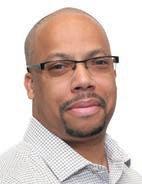
worth for white families in the region.
So, is now the right time for Chicago and Illinois taxpayers to provide billions in public subsidies for new sports stadiums?
dressed? Whose interests are being served?
We will use the Bears as an example. Trying to find a way to keep this storied franchise in our city limits is a worthy project. But FOTP has been reflecting on how quickly their surprise proposal for a new stadium moved to the front of the line for civic attention.
In the last few months, we have received 20 times as many requests for interviews about the Bears than all other topics combined. Meanwhile, we receive messages every day from park users about the scarcity of summer camp programming, restrictions in access due to private events, and inequities in the quality and quantity of play spaces.
A mere four months after news broke that the Bears did not want to leave Chicago after all, Mayor Brandon Johnson and other city officials were headliners at a Bears press conference to announce a bold plan to dramatically reshape the Museum Campus at significant public cost.
Four months. Less time than it

can take for a constituent to get a call back about a broken water fountain.
Of course, these are projects of different scale, which is all the more reason to question the appropriateness of scrambling to meet the whims of a billion-dollar private enterprise.
Especially when there is another invaluable asset at stake: our forever open, clear and free lakefront. While other shorelines are blocked off by industrial and private uses, we have a hard-won, 26-mile-long continuous parks and path system
that is the envy of cities across the world. If not for the tireless, often politically unpopular efforts of generations of lakefront advocates, we would not be debating whether to greenlight a new stadium at the water’s edge. It would have already been sold to the highest bidder.
As we deliberate the costs and benefits of new stadiums, let us not forget to factor in the diversion of the time and attention required for the deliberation process. And our lakefront, a public asset core to Chicago’s identity, should not be for sale.
But the “Chicago experience” is different for many on the city’s South and West sides, which have experienced decades of economic disinvestment — leading to a critical shortage of affordable housing, more than 200,000 individuals on the Chicago Housing Authority's waitlist, and four decades of Black population loss. Recently, The Chicago Community Trust published a study that found Black households in Chicagoland have a median net worth of $0, as compared to $210,000 median net
Our downtown is still reeling from a pandemic that left a sea of vacant office buildings and empty ground-floor retail spaces. Two new stadiums with the promise of hundreds of thousands of visitors is perfect for luring residential developers and investors to grab as many vacant properties as possible to covert. Yet, as proposed, this endeavor would entail billions in subsidies directed downtown and in wealthy collar neighborhoods. Additionally, the Bears and White Sox were ready to leave Chicago taxpayers on the hook for a combined $639 million in existing bonds issued by the Illinois Sports Facilities Authority for earlier renovations in 2002 and 1991, respectively.
We have seen these old stadium financing models did not work for all of Chicago. The city and state now have a once-in-a-generation opportunity to create a visionary new model that not only capitalizes on the local and national strength

of Chicago’s sports franchises, but has long-term benefits for all residents, including neighborhoods on the South and West sides.
One idea could be for ISFA and the city of Chicago to issue a 3% low-interest loan that is guaranteed by the revenue the stadiums will generate from their activities (i.e., concerts, games, conventions) and estimated property taxes, instead of the hotel tax and Chicago’s share of their state income tax. Any shortfall from stadium activities should be the sole responsibility of the respective teams. Additionally, the teams would be responsible for paying the full outstanding debt and projected interest on their loans if they decided to exit the contracts early. The negotiated interest revenue generated by the loan over a 30-year amortized
period for both stadiums could be a permanent source of funding for affordable housing, along with the current affordable housing bond structure, and the split revenue from stadium activities could help fund our pensions.
As for the 2% hotel tax, the city should instead spend it on critical infrastructure improvements throughout our neighborhoods and identify high-impact business corridors with a five-tosix-block span to develop entertainment and recreation districts in distressed communities on the South and West sides. As just one example: Far South Community Development Corporation’s Bringing Communities Back Initiative is a bold plan to redevelop more than 1 million square feet of vacant and abandoned high-impact areas into
thriving hubs for residents and families on Chicago’s Far South Side, including mixed-use affordable housing developments, park space and entertainment.
We cannot stop the stadium developments from moving forward and risk losing the economic opportunities it could yield. What we can advocate for are more tangible benefits other than temporary construction jobs and contracting opportunities that are rarely tracked. I urge the city of Chicago and state of Illinois to create a stadium financing model that will generate significant funding for our communities and help resolve some of our most pressing challenges, including affordable housing, food and pharmacy insecurities, and deep economic disparities.
So, let’s get this out of the way — spending public money on sports stadiums produces NO public benefit for the public. This stark fact has been demonstrated over and over again via academic studies and on-theground reporting over the decades.

Tom Tresser is a Chicagobased civic educator and community organizer.
Just click over to either of these websites and share widely with friends and family: “Field of Schemes” by sports journalist Neil deMause and the “Pay for Your Own Damn Stadium” campaign by the Center for Economic Accountability.
Dan Moore, a sportswriter based in San Francisco, notes in a piece in The Atlantic titled, “Taxpayers Are About to Subsidize a Lot More Sports Stadiums,” that taxpayers have paid out nearly $30 billion in subsidies for stadiums since 1990. He tells us that the “economic research is unequivocal — these subsides are a boondoggle for taxpayers.”
If not the public, then who DOES benefit from public subsidies for private sports stadiums? Why, the answer is pretty simple — white billionaires. In the case of Chicago, we have not one, not two, but three white billionaire families angling for public dollars for THREE stadiums. The total amount of our money on the table is in the ballpark of $6 billion.
Hey, it’s not like professional sports need any help from the taxpayers.
In 2023, Major League Baseball pulled in $11.6 billion and the National Football League tackled $19 billion in revenues. A quick Google on the three sports-owning families reveals that the McCaskey family has about $2 billion, Jerry Reinsdorf is worth about $2.4 billion, and the Ricketts family clocks in with $3.7 billion. That’s a total combined net worth of over $8 billion.
So, I am calling for a mass movement — “Stop the Billionaires Stealing Our Stuff!” or SBSS. Call your alderman, the mayor, your state representative, your state senator and the governor. Tell them you have had it up to here with massive giveaways of public dollars and public land to billionaires.
I was part of the No Games Chicago campaign back in 2009 that helped derail Chicago’s bid for the 2016 Olympics. We did all the background research on subsidizing private mega-projects such as the Olympics and sports stadiums. We put all that information on our website and communicated to the public via dozens of meetings, press releases, protests and oldschool flyers. We exposed the lie that the Olympics would bring prosperity to Chicago.

The literature was clear as day then, and the research has piled up even more dramatically since then. Mega-projects overpromise and underdeliver. Every time. It is as if Chicago’s civic ecosystem has a massive case of amnesia and forgot all that and we are back at square one.
What SHOULD we invest in, if not the private stadiums owned by white billionaires?
The answer is simple. We need more "public," not less: We need more public school teachers, more
public health workers, more public parks, more public transit, more public housing and more public libraries. I know Chicago is the home of the University of Chicago and the “market can do no wrong” mindset and that city government has been reduced to a sort of back-office function for the real estate industry. What passes for “economic development” here is simply a list of real estate deals. We often hear that these mega-projects will make Chicago a “world-class city”
and project proponents trot out the oft-quoted saw from Daniel Burnham to "make no small plans.” If you hear that nonsense, I suggest you hold on to your wallet and run for the exit.
I am calling for a shift from “thing-based” economic development planning to “people-centric” planning and spending. Let’s put all our public dollars in service of the public for a change. Not one cent of public money, not one square foot of public land for billionaires. No more BSS!
Back in the 1980s, one of President Ronald Reagan’s quips was if there were an edition of the popular board game Trivial Pursuit just for economists, it would only contain 100 questions but would have 3,000 answers. My own sense is that if such an edition existed, it would be the version for sociologists. A Trivial Pursuit for economists would have 1,000 questions but only 10 answers. What’s the joke? And what are those 10 answers? In economics, or for economists, virtually all questions boil down to a small set of answers. For example, the adage that “there is no such thing as a free lunch” means that everything or every decision involves a tradeoff: We — or society — must give up something to get more of something else. And those choices involve costs, what economists usually call “opportunity costs.” For example, the largest cost of college for the typical student is not the tuition, but rather a salary for the four years one has to forgo in order to

Allen Sanderson is a senior instructional professor in economics at the University of Chicago and serves on the editorial board of the Journal of Sports Economics.
go to class and earn that degree. Another “answer” would be that “trade makes both parties better off.” A third: “People respond to incentives.” A fourth: “Most of life’s decisions involve choosing between a little more or a little less, not all-or-nothing propositions.”
2024 has been an unusually active year when it comes to big-ticket events and facilities, many of which have included (or will include) the world of sports: the Paris Olympics, the usual run of professional league contests and more activity in college athletics. Then fold in our presidential election and national political conventions in Milwaukee and right here at home. And certainly the flurry of activity in other cities to our east, south and west to build new state-of-the-art venues in the NFL and MLB. Whether it be Arlington Heights, Naperville, Soldier Field, “The 78” or Evanston, the Bears and White Sox have gotten into the taxpayer-funded and U-Haul bidding as well.
Back to our Trivial Pursuit intro-

duction and small number of questions:
Years of research and a plethora of data, some of which I have conducted and submitted myself for professional publication, all point in one direction and to one conclusion: Sports facilities, regardless of activity or league, whether publicly funded or paid for privately, do not constitute a good
investment for the sponsor.
The closest one could come to an economic “wash” would be an arena that is home to an NBA and NHL franchise, plus the periodic concert, convention or other activity. By far faring the worst is a standalone NFL stadium that is used 10 days a year. As I testified a few years ago in New York, when then-Jets owner Woody Johnson
wanted to move his team to the Hudson Yards area on Manhattan: “Hudson Yards is a valuable piece of real estate. There are only two things you never want to put on valuable property: a cemetery or a football field. Everything else is negotiable.”
Another rule of thumb: Take any dollar figure a sponsor — of the Chicago Marathon, NASCAR, a Bears game, Democratic National Convention — gives you for the economic impact of that activity on the Chicago economy. Move the decimal point one place to the left and you’re pretty close.
Given that football has become close to a TV sport – probably 75% or 80% of any NFL team’s revenue is from television — “investing” in a facility is an economic loser from day one.
Most fans at NFL games are local in nature. They spend their $200 and three hours inside, say, Soldier Field, instead of at a Loop retail establishment or a suburban mall; they don’t stay in hotels. Net benefit to the Chicago economy? Approximately $0.
There are so many more pressing needs in our magnificent city. Don’t even think about wasting a dollar — or $2 billion — on this monster on the midway.

The Chicago Bears had two financial wins on the first day rookies reported to training camp on July 16: signing first-round draft picks Caleb Williams and Rome Odunze. This allows the team to avoid the distraction of protracted negotiations with the league’s No. 1 overall pick and its highly touted wideout as it begins a season of big expectations on the field.
Off the field, the team’s president, Kevin Warren, is seeking another financial win in his quest for a new publicly funded stadium. Public funding for sports arenas are unpopular these days. Less than two months after the Kansas City Chiefs won their second consecutive Super Bowl, voters in Jackson County, Mo., where the team and baseball’s Kansas City Royals are situated, rejected a sales tax measure that would have financed renovations for the former and a new ballpark for the latter. “If the Super Bowl champion Kansas City Chiefs can’t get the people of their area to authorize the building of a new stadium, I don’t really think the people of Chicago, or across Illinois, feel any different,” Gov. J.B. Pritzker argued in April. Pritzker’s words are consistent with public opinion. Polling has been consistent on this issue, except for instances of the public becoming more sour on the idea. Chicagoans either want the private sector to foot the entire cost of a new field for the Bears (37%) or most of it (36%). That combined 72% of respondents has shot up from December 2022, when the total figure was 60%. When the Harris Poll asked Chicagoans about public financing last September, 60%


said that sports arenas were not a good use of taxpayer money.
The M3 poll Crain’s commissioned on the topic is consistent with our findings: Statewide, Illinois voters oppose the Bears’ ask — for $1.2 billion in public funds toward a $3.2 billion stadium — by more than 2 to 1, or 65% vs. 28%.
The margin was closer on the other part of the Bears’ proposal, $1.5 billion for infrastructure improvements around the proposed site on the lakefront Museum Campus: State voters opposed it 49% to 46%.
The Bears face these hurdles despite being the most popular game in town: 54% of Cook County residents consider themselves Bears fans, while only 33% say the same for the White Sox, so Jerry Reinsdorf may face more of an uphill climb in his own pursuit of public money.
That said, the Bears can burnish their reputation and negotiating position by putting serious skin in the game. Their pledge to contribute $2 billion of private funds toward construction is a net positive: 43% of our respondents said the Bears’ pledge gives them a better view of the team. What’s more, most Chicagoans (56%) said they would view the team more favorably if it paid for most of the cost of
a new stadium. The strongest case for a new stadium is the economic ripple effects it could have, and, indeed, 44% of city residents believe that building one would attract new businesses to its neighborhood.
But the overall landscape for a deal involving public financing is grim. Though he finally sat down with Warren earlier this month, Pritzker initially called the would-be deal a “non-starter” despite Mayor Brandon Johnson’s embrace of it.
The Bears are still enjoying the honeymoon that comes from drafting the golden-armed Williams. Johnson’s grace period is over — and while he is on the right track in looking for ways that the public and private sectors can work together, the public has yet to be convinced this is the soundest way forward.
Our polling seems to suggest that selling the economic benefits may provide a path toward winning more support. The Loop is still in dire need of revitalization, and establishing a new, vibrant district on the lakefront could yield agglomerative effects. Milwaukee may have cracked the code with its investment of $250 million to create the Deer District around the Bucks’ Fiserv Forum, with the goal of making it a “365-day destination.”
Taking a few cues from other successful public-private partnerships in creating not just stadiums but comprehensive sports and entertainment districts may provide a more compelling message for the Bears’ boosters. Looking beyond just football and expanded park space, what could the spillover effects of such a mega-project be on the Museum Campus, the Loop and the city at-large? That’s something the public may want to know.
Which funding source should be used to pay for the construction of a new
Do you agree with this statement? “I’d view the Chicago Bears more favorably if they contributed more than half of the cost of construction of a new stadium.”
However, HCSC’s Smith was paid significantly more than his peers. CEO compensation at major publicly traded health insurance companies, including UnitedHealth Group, Centene, Cigna Group, CVS Health, Elevance Health, Humana and Molina Healthcare, averaged $20.6 million last year, according to a Modern Healthcare analysis. Meanwhile, HCSC’s Smith received nearly $28 million.
“In a public company, it is very, very imperative that you hold your executives to a performance standard that would meet a certain peer group,” says Josh Crist, a co-managing partner at Chicago-based executive search firm Crist-Kolder Associates.
But “you can kind of do whatever you want in a private setting,” he adds.
Another unusual aspect about Smith’s compensation is that it has more than doubled in just two years, from $11.8 million in 2021 to $27.9 million in 2023.
“In two years, that is a massive jump,” Crist says.
Asked about Smith’s hefty raises, HCSC’s Miller pointed to the fact that Smith was promoted to CEO in 2020 after serving in several other leadership roles over a 30-year-plus tenure at the company. Since taking the role, he’s led

the company as it has grown membership and revenue, expanded digital capabilities and created local jobs. From 2021 through the first quarter of 2024, HCSC added about 3.1 million members, a 15% increase, which translated to $13 billion in revenue, Miller said. Smith is also in the process of executing the largest deal of his
tenure so far. HCSC announced earlier this year it would acquire Cigna Group’s Medicare assets for $3.3 billion. The deal is expected to close early next year.
As a privately held company without a publicly traded stock, Smith receives all compensation in cash, rather than some in stock options, like most of his peers. Cash compensation is generally
considered more valuable than stock because there are no vesting periods, recipients can invest it however they choose, and ultimately, payouts won’t be determined by market fluctuations.
“With cash, there's no risk,” Crist says.
Elsewhere on the leadership team, HCSC gives unusually high pay to its board chairman, Carroll,
who was paid nearly $18 million in 2023. In stark contrast, UnitedHealth Group, Centene and Humana paid their board chairs about $441,519, $474,954 and $601,300, respectively, according to U.S. Securities & Exchange Commission filings.
All other HCSC board members made considerably less than Carroll, with compensation ranging from $325,000 to $351,000, records show.
Miller declined to disclose how many hours or days of work Carroll completes in a month but said he “dedicates significant time to matters of critical impact to the company, including strategic direction, board governance and oversight and company stewardship.”
Carroll has served on HCSC’s board for 26 years, but his current term expires this year, according to HCSC’s website.
As a privately held company, HCSC is also not required to disclose the income ratio between its CEO and median employee — even in the documents Crain’s obtained from the Illinois Department of Insurance — and HCSC declined to share it.
In response to a question on the issue, Miller said, “HCSC’s total rewards package is competitive for our industry. We work with outside consultants to ensure all compensation and benefit programs are appropriate to attract and retain talent.”









The Chicago Leadership Circle (CLC) is designed to support executives in better understanding, shaping, and engaging with the region’s economic and community development.

Upon completing the program, fellows will have:
• A deeper understanding of the economic and social issues affecting Chicago’s future
• A vision for how to build shared value for their companies and for the region
• Formed meaningful relationships with socially responsible business executives and civic leaders across the region
• A roadmap for simultaneously advancing the aims of their institution and the city
From amenity-filled office buildings to shelters for the unhoused and property technology startups to firms established a half-century ago, the work of our honorees exemplifies the breadth of the Chicago area’s commercial real estate industry.
METHODOLOGY: The individuals featured did not pay to be included. Their profiles were written from the nomination materials submitted. This list is not comprehensive. It includes only individuals for whom nominations were submitted and accepted after a review by editors. To qualify for the list, nominees must be employed by a construction, architecture, engineering or commercial real estate company and show work on significant projects. They must live and work in the Chicago area and demonstrate leadership through involvement in professional organizations and civic and community initiatives.
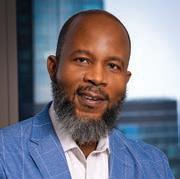
Jimmy Akintonde
CEO and president
UJAMAA Construction
Scope of work: Jimmy Akintonde, who founded UJAMAA Construction in 2002, oversees more than 100 employees and a $120 million portfolio in sectors including residential, retail, commercial, health care, cultural and education.
Biggest professional win: He co-founded Presidential Partners, which formed the majority of the Lakeside Alliance that’s building the Obama Presidential Center, the first project of this size led by minority firms. UJAMAA is also the lead contractor on the Northwestern Medicine Bronzeville Advanced Outpatient Care Center. Akintonde also oversees UJAMAA’s expansion with an Atlanta office covering six Southeast states.
Other contributions: Akintonde is president of Black Contractors Owners & Executives and in 2013 was the first African American president of Chicagoland Associated General Contractors.
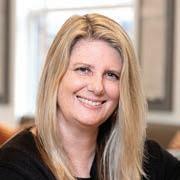
Associate principal Perkins Eastman
Scope of work: As a leader in Perkins Eastman’s workplace practice, Heather Cain leads projects ranging from a few hundred thousand dollars for modest tenant improvements to millions for new buildings and substantial renovations. She has begun translating her knowledge to practice areas including senior living and education.
Biggest professional win: The Forrestal Elementary School project, a new, net-zero-targeted school at the Naval Station Great Lakes, advances Cain’s and the firm’s work in sustainable K-12 design.
Other contributions: Cain is a member of CoreNet, serving on its membership committee. She is also involved with Perkins Eastman’s mentorship program, is a LEED for Interior Design and Construction Accredited Professional and is National Council for Interior Design Qualification-certified.
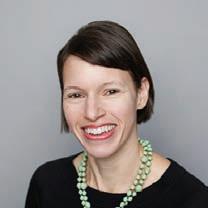
Kate Ansorge
Managing director of real estate solutions IFF
Scope of work: Kate Ansorge leads a team of 10 supporting nonprofits and government entities across Chicago and Milwaukee, executing 60 to 70 real estate projects a year such as health clinics, early child care centers and food pantries.
Biggest professional win: In 2023, she worked with emergency housing operators and the Cook County Bureau of Economic Development on two suburban non-congregate shelters, identifying capital and operational funding, obtaining zoning approvals, engaging architects and contractors, and helping secure American Rescue Plan Act funds. The project will provide 98 rooms for unhoused individuals and families.
Other contributions: Ansorge serves on Illinois’ Full Day Kindergarten Task Force and the boards of the nonprofits NeighborSpace, Concordia Place and Elevated Chicago.

Salvatore Caldarone
President Realogic
Scope of work: Salvatore Caldarone, who co-founded consulting and advisory firm Realogic in 1992, is involved in client delivery, strategy, business development, marketing and proptech initiatives.
Biggest professional win: He co-founded proptech startup rSquared CRE and was CEO when it spun off from Realogic in 2019. Under his leadership, rSquared developed and launched rDCF, an innovative cloud-based valuation and underwriting solution. After commercial real estate finance giant SitusAMC purchased rSquared in 2020, Caldarone remained at the helm, growing revenue and market share despite the pandemic, until earlier this year, when he returned to Realogic as president.
Other contributions: Caldarone and Realogic have supported industry events like the John Buck Spring Fling, REFF Annual Holiday Party and Goldie Initiative events.

Bonnie Boden
Executive vice president Transwestern
Scope of work: Boden is director of operations of asset services in the Midwest, which currently includes over 40 million square feet of Transwestern’s managed portfolio of office, industrial, retail and mixed-use assets.
Biggest professional win: In the last several years, Boden has led her team in a significant pivot to rethink distressed assets, providing extra support to a historically neglected property type. Her teams identify and resolve financial and administrative issues, maintaining and even adding value to these properties.
Other contributions: Boden is on the board of the Chicago Real Estate Network, a trustee on the International Union of Operating Engineers Local 399 401k Board and a member of the Building Owners & Managers Association of Chicago.

Chief operating officer of real estate
Tawani Property Management
Scope of work: Kimberlee Carr oversees a diverse portfolio ranging from single condo units to single-family homes, multi-unit residential complexes, and commercial and retail spaces.
Biggest professional win: Carr led the development and launch of Tawani Property Management’s latest project, the Mission94 Firearms Education Center in Kenosha, Wis. She also demonstrated her knack for revitalizing older commercial properties in her work on the Monroe Building downtown. Carr has focused on rejuvenating spaces, exploring solutions such as conversion to residential or mixed-use spaces.
Other contributions: Carr is an Accredited Residential Manager and a Certified Property Manager, certified through the Institute of Real Estate Management, and holds an Illinois real estate managing broker’s license.

Brower Vice president of development Focus
Scope of work: Courtney Brower leads development activities including acquisition, entitlement and management, from construction through disposition. In her nine years with Focus, she has managed projects valued at over $800 million and is currently responsible for more than $275 million in real estate in development or under construction.
Biggest professional win: Acting as development manager, Brower led the design and construction of 167 Green in Fulton Market. Construction of the office building was completed during the COVID-19 pandemic and 61% of its space was leased during that time, ultimately achieving a 21% premium on its anticipated rents. Other contributions: Brower is a member of the Real Estate Finance Forum and volunteers with Second Star Children’s Camp.

President and CEO
Inland Real Estate Group
Scope of work: With more than 30 years of experience in finance, tax, audit, commercial real estate, capital markets and the alternative investment industry, Anthony Chereso oversees Inland entities that constitute one of the nation’s largest commercial real estate and finance organizations.
Biggest professional win: Chereso initiated and executed an agreement for Inland to purchase a majority interest in Devon Self Storage Holdings, one of the largest privately owned, national self-storage operators, and Devon’s self-storage insurance entity, Powell Insurance Services. Since entering the sector in 2016, Inland has amassed a $1.7 billion self-storage portfolio.
Other contributions: Chereso supports associations including the National Association of Realtors, the National Association of Real Estate Investment Trusts and the Institute for Portfolio Alternatives.

Hannah Cho
Senior director of design and construction
Irvine
Scope of work: Hannah Cho is responsible for design and construction of Irvine’s 4.2 million-square-foot Chicago portfolio, composed of three Class A+ trophy towers: 300 North LaSalle, One North Wacker and 71 South Wacker. Cho and her team are currently managing two major reinvestment projects totaling $30 million-plus.
Biggest professional win: During her career at Irvine, Cho has built an in-house construction team and integrated construction accounting internally. Under her leadership, more than 50 tenant improvement and Flex+ workspace buildouts, as well as other capital projects, have been completed since 2022.
Other contributions: Cho previously served as a board member for the CoreNet Chicago chapter and remains active in the Chicago commercial real estate industry.
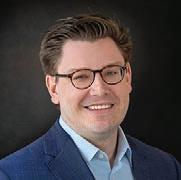
Charles Fisher
Director of global CRE risk analytics
JLL
Scope of work: Charles Fisher leads the effort to digitize and scale valuation and risk products for JLL Risk Advisory, providing lenders and institutional owners with automated valuation models and analytics to monitor their global portfolio, balancing risk and opportunity.
Biggest professional win: An international lender with a $7 billion, 1,000-property commercial real estate loan book wanted to monitor its portfolio’s property value and price, liquidity and market risk. Fisher’s team provided clarity, insight and cost savings at scale through their comprehensive set of risk analysis insights, which helped the lender monitor collateral values and concentration risks.
Other contributions: Fisher has served on the MetroSquash auxiliary board and the young alumni committee at the University of Chicago.
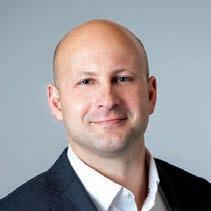
Rob Damrat
Managing director
Link Logistics
Scope of work: As managing director for Link Logistics’ Central Region, Rob Damrat is responsible for a 92.1 million-square-foot Midwest portfolio spanning Chicago, Indianapolis, Kentucky, Minnesota, Missouri, Ohio and Wisconsin. He and his team of 52 are responsible for 564 properties and 1,575 customers.
Biggest professional win: Since he took over responsibility for Link’s Midwest presence, the market has grown exponentially in square footage, property and customer count. Damrat was instrumental in hiring a deep bench of experts who have strategically driven this growth.
Other contributions: Damrat is a member of the Chicago chapter of the National Association for Industrial & Office Parks and serves on the executive board of DePaul University’s School of Real Estate.
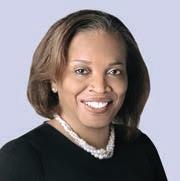
Rona Fourte
Vice president and global head of supplier diversity
CBRE
Scope of work: Rona Fourte spearheads CBRE’s global supplier diversity program, which aims to spend $3 billion with diverse suppliers in 2025. She oversees development and implementation of strategies and programs that promote the inclusion and utilization of diverse suppliers across the company globally.
Biggest professional win: Since she rejoined CBRE in March 2022, global diverse spending grew year over year by 32% and 38% in 2022 and 2023, respectively. In 2023, CBRE focused on qualitative enhancements, including strengthening its supplier development program and further engaging suppliers.
Other contributions: Fourte is board chair of the Chicago Minority Supplier Development Council and a member of the boards of Holsten Human Capital Development and the Women’s Business Development Center.
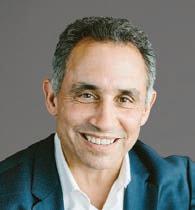
Andrew Davidson
Executive managing director
Transwestern
Scope of work: As executive managing director of tenant advisory and workplace solutions in Transwestern’s Chicago office, Andrew Davidson has represented corporate tenants in strategic planning, GAAP accounting treatment, state and municipal incentives, build-to-suit transactions and major headquarters relocations.
Biggest professional win: Davidson and his team worked with Cook County departments outgrowing their 69 W. Washington St. space, quickly finding new space. His team identified 31 potential options, helping the county choose 161 N. Clark St. due to its closeness to 69 W. Washington and minimal buildout requirements. He negotiated a short-term lease, rent at 25% below market rate and more than double market-rate concessions.
Other contributions: He is on Chicago Youth Programs’ board.
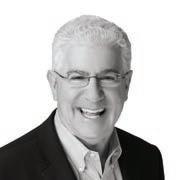
President
Conor Commercial Real Estate
Scope of work: David Friedman is responsible for managing and leading Conor Commercial Real Estate’s development and investment activities nationwide, working with the firm’s Chicago, Atlanta, Dallas, Phoenix and Irvine, Calif., offices in the industrial and multifamily markets. He’s also a member of the firm’s board and investment committee.
Biggest professional win: His growth strategy has led the firm to add offices in Dallas and Atlanta. He also reinvigorated Conor’s activity in the multifamily market with the development of a 327-unit apartment residence in Dallas.
Other contributions: Friedman is on the boards of the Chicago Furniture Bank, ECI Group and TRO Investment Group and is a member of the National Association for Industrial & Office Parks and the Urban Land Institute.

President McShane Construction
Scope of work: Mat Dougherty oversees McShane’s national construction activities for its offices in Chicago; Auburn, Ala.; Irvine, Calif.; Madison, Wis.; Nashville, Tenn.; and Phoenix. In the role since 2021, he oversees 200 employees, 27 projects across the country and revenue of $706 million.
Biggest professional win: To support the growth McShane experienced in the Southeast, Dougherty opened the firm’s office in Nashville, its sixth regional office. To equip young managers to become leaders in the company, he founded a developing leaders program.
Other contributions: Dougherty serves on Marquette University’s construction advisory board and is a member of the American Society of Civil Engineers, Associated General Contractors of America and Chicagoland Associated General Contractors.

Vice president of construction Related Midwest
Scope of work: Mark Goeden oversees self-performed contracting work for Related Midwest’s affordable housing portfolio as well as communities owned by third parties, totaling 57 multifamily and senior residential projects comprising over 10,600 units. He manages $130 million in projects across the Midwest. Recent notable projects include Heiwa Terrace and South Shore on the Park in Chicago and Poplar Place in Springfield.
Biggest professional win: A founding member of Hire360, an organization with over 100 companies dedicated to expanding career opportunities for underrepresented populations, he helped raise funds to acquire and renovate Hire360’s Training & Business Development Center.
Other contributions: Goeden has volunteered with the Council on Construction Operations, the African American Contracting Association and the Hispanic American Construction Industry Association.

25.8% Downtown office vacancy rate during the first half of 2024, an all-time high. The vacancy rate for Class A buildings in the second quarter was 18% and for Class B buildings was 29%.
(CBRE data and Crain’s reporting)

Lee Golub Managing principal Golub
Scope of work: Under Lee Golub’s guidance, Golub has experienced notable growth across various property sectors and geographical markets. As a member of the executive committee, Golub guides the company’s strategy, decisionmaking and relationshipbuilding efforts.
Biggest professional win: He spearheaded the conversion of the Tribune Tower from a 737,000-square-foot, 36-story office building into 162 luxury condominiums and 47,000 square feet of Michigan Avenue retail space. The project provides a case study for the increasing demand for adaptive reuse within a landmarked building.
Other contributions: Golub serves on the boards of Chicago Gateway Green, Lookingglass Theatre and the Magnificent Mile Association, and is a member of the architecture and design committee at the Art Institute of Chicago.

Dave Hall
CEO
Clune Construction
Scope of work: Dave Hall was named Clune Construction’s CEO in 2020. Under his leadership, the firm’s revenue rose from $1.3 billion in 2020 to $2.1 billion in 2023.
Biggest professional win: With a focus on the future and company growth, he emphasized the adoption of the Clune Way across every team and department, prioritized making operational excellence the norm and created an environment open to innovation. Clune was recently named a 2024 U.S. Best Managed Company, a program sponsored by Deloitte and The Wall Street Journal.
Other contributions: Hall is a longtime supporter of the nonprofits Revolution Workshop, which provides construction workforce development for unemployed or underemployed people, and Habitat for Humanity, where he also volunteers.

William Himmelstein CEO Tenant Advisory
Group
Scope of work: William Himmelstein founded Tenant Advisory Group in 2008, establishing an intentionally small team that he has curated over the years. Last year he oversaw $75 million in transaction volume, including $15 million in client savings. In all, he has completed over $1 billion in commercial transactions.
Biggest professional win: In 2023, he facilitated a sale leaseback for a manufacturing company that owned a 53,000-square-foot industrial building and needed cash. The firm was considering pay cuts and layoffs, but Himmelstein helped structure a multimillion-dollar deal, saving more than 80 jobs.
Other contributions: Himmelstein guest lectures at the University of Illinois Chicago, DePaul University and Columbia College Chicago, and was a founding member of two entrepreneurial organizations.

Principal Chicago Homes Realty Group & Property Management
Scope of work: Courtney Jones has experience managing diverse properties, including the historic 38-story Pittsfield Building.
Biggest professional win: In managing the receivership of the Pittsfield Building, he overcame significant financial, legal and structural challenges, stabilized the property financially, resolved legal disputes and oversaw crucial restorations, preserving an important architectural landmark.
Other contributions: As third vice president of the National Association of Real Estate Brokers, Jones advocates for African American homeownership and equitable housing policies. As president of the Dearborn Realtist Board, Chicago’s oldest Black trade association, he launched the community receivership program.


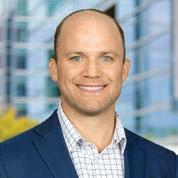
Peter Kelly
Executive vice president
Lincoln Property
Scope of work: Peter Kelly is responsible for Lincoln Property commercial real estate activities across the Midwest, over 15 million square feet of assets under management across five states.
Biggest professional win: Kelly and his team developed approximately 190 acres in New Albany, Ohio. The project, Silicon Heartland Innovation Park, was acquired by a joint venture of Lincoln Property and Harrison Street Real Estate Capital in May 2022. Lincoln Property delivered approximately 650,000 square feet of warehouse and distribution space across two buildings. The land recently sold for a significant return to the joint venture.
Other contributions: Kelly is a member of the National Association for Industrial & Office Parks and the Urban Land Institute.

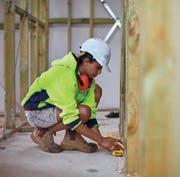
NOTE WORTHY 25%
The 2022 to 2023 revenue increase for the 25 firms on Crain’s new list of Chicago’s Largest Construction Companies (Crain’s reporting)
DAVE HALL Chief Executive Officer
Clune Construction

Dave stepped into the CEO role at a time of global uncertainty and steered the company with compassion, a focus on operational excellence and an eye on the future. His vision of instilling Clune’s set of values and behaviors at all levels of the company unified and drove Clune to achieve record-breaking metrics year after year.


”
— Mike Clune, Founder & Chairman









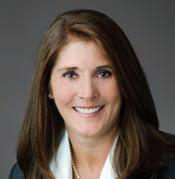
Lisa Konieczka Executive vice president CBRE
Scope of work: Lisa Konieczka focuses on occupancy strategies and flexibility challenges associated with new workplace trends, hybrid work, growth and change for corporate clients in Chicago and worldwide.
Biggest professional win: In late April 2022, she co-led CBRE’s advisory representation of Boston Consulting Group, which leased 220,000 square feet as the anchor tenant at Sterling Bay’s 360 N. Green, moving its Chicago office operations and over 1,000 employees from River North to Fulton Market with a 15-year lease commencing at the end of this year.
Other contributions: Konieczka is founder and chair of the CBRE Women’s Network, is on the board of Gilda’s Club and is a longtime member of The Economic Club of Chicago.
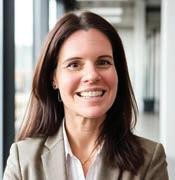
President Insight Project Management
Scope of work: Christine Lofton oversees a team of 50 professionals and an annual budget exceeding $200 million. Recent notable projects have been at O’Hare International Airport, including leading the teams replacing the Terminal 1 barrel vaults at Concourse B and C, campuswide security upgrades, reinforcing tunnel infrastructure to accommodate larger aircraft and developing several clubs and lounges.
Biggest professional win: Recognizing the lack of women in leadership roles in construction real estate within aviation and manufacturing and distribution, she founded Insight Project Management, which has seen two-times growth in revenue and staff.
Other contributions: Lofton is involved with Chicago Women in Architecture, Professional Women in Construction’s Chicago chapter and the National Association of Women in Construction.

Molly Laurain Managing partner Seven
Scope of work: As a founding partner of Seven’s U.S. operations, Molly Laurain oversees business operations and supporting clients in all aspects of project and program management. Among her current projects, she’s Americas program manager for a large California-based real estate investment trust and is providing transaction management and development for a Chicago-based health care company.
Biggest professional win: Previously at Salesforce, she was international project director, leading the delivery of 1 million square feet of office interiors projects at Salesforce Tower in Chicago, as well as similar work at Salesforce towers in Atlanta, Indianapolis, Sao Paulo, Denver and Dallas.
Other contributions: Laurain’s community engagement has included the Chicago Architecture Center board, the Junior League of Chicago and Cristo Rey Jesuit High School teen mentoring.
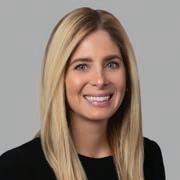
Victoria Malkin
Regional president
Cushman & Wakefield
Scope of work: Victoria Malkin oversees Cushman & Wakefield’s business in markets including Dallas, Houston and Austin, Texas; Chicago; Detroit; Indianapolis; Kansas City; Minneapolis; St. Louis; Ohio; and Canada. She’s responsible for growth planning, client care, brokerage talent development and performance management in the Central region.
Biggest professional win: At 36, Malkin is Cushman’s youngest senior executive, guiding strategy, business development, client care and recruiting for a territory that generates $450 million in business with more than 600 brokers in 16 markets. In the past year, her leadership expanded to include Canada and Texas, the firm’s fastest-growing region in the Americas.
Other contributions: Malkin spearheads Cushman’s Parents & Caregivers Together group and mentors through the firm’s Women’s Integrated Network.

$446 million
The value of the 65% stake GI Partners acquired from Digital Realty for CH1 in Chicago. In 2023, it was the most expensive deal for a U.S. data center property.
(Statista and Crain’s)

LeBlanc Principal Gensler
Scope of work: As director of strategy and analytics, Wes LeBlanc focuses on building the future of the practice through the integration of technology and data into operations and the design process, expanding the firm’s capabilities in architecture and adjacent fields. He manages a group of multidisciplinary strategists, executing about 50 selective client engagements per year.
Biggest professional win: Early in the COVID pandemic, he spearheaded ReRun, a tool that enabled rapid analysis of the impact of social distancing on workplaces. The tool won the 2020 Accenture Corporate Innovator Award from Chicago Innovation. Most recently, his work on Gensler’s data-driven tools has included analyzing the feasibility of office-to-residential building conversions.
Other contributions: LeBlanc is a member of the Urban Land Institute and Lambda Alpha International.
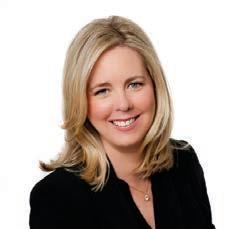
Senior vice president and director of sales for National Commercial Services Chicago Title Insurance
Scope of work: Cindy Malone co-manages a sales team of 20 responsible for over $50 million in annual revenue. She has spent 30-plus years managing highprofile national client accounts, including REITs, law firms, hotels and corporations in complex multistate, multisite commercial real estate transactions.
Biggest professional win: Malone developed and expanded Fidelity National Financial’s women’s leadership mentorship program, which includes Chicago Title, a subsidiary of Fidelity National Financial. The initiative spans all company brands and roles, from executive management to entry-level positions, across the nation.
Other contributions: She’s on the board of The Goldie Initiative and is a member of the Urban Land Institute and the National Product Council.

President and partner Redmond
Scope of work: Bradley Malouf oversees the success of Redmond’s entire project team, supervising the firm’s most complex and technical builds in Chicago and across the country.
Biggest professional win: His role has evolved from project director to president and partner, and in 2022 he became a registered architect, providing him with a multidisciplinary approach to the general contracting side of projects. Malouf has played a leading role in scaling Redmond to a national level with the opening of its Denver office, while securing contracts and leading projects in different markets across the country.
Other contributions: Malouf is a member of The Economic Club of Chicago and serves on the board of the Redmond Foundation.
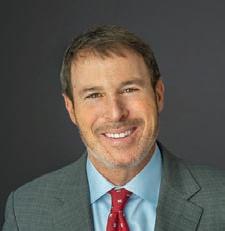
Todd Lippman Vice chairman CBRE
Scope of work: Todd Lippman has completed over 50 million square feet of transactions throughout his career, specializing in large, complex transactions with a focus on headquarters relocations and law firms.
Biggest professional win: When Northern Trust faced a 550,000-square-foot expiring lease, Lippman created a strategic plan, relocating approximately 3,000 employees. The bank’s new lease at 333 S. Wabash Ave. includes the ability to expand or contract throughout the lease and a major renovation of the building’s amenities. Lippman and his team also executed a five-year renewal at Northern Trust’s premises at 181 W. Madison St., with an option to reduce space by 50% at no additional cost.
Other contributions: Lippman is on the boards of Providence St. Mel and the Chicago Children’s Museum.

NOTE WORTHY 5,381
As of March, the number of data centers in the U.S., the most of any country worldwide; Germany had 521, while 514 were located in the United Kingdom. (Statista)

Angelica Marks
Associate vice president for real estate operations
University of Chicago
Scope of work: Angelica Marks oversees UChicago’s 375,000square-foot commercial real estate portfolio, cultivating a small and local tenant mix — 63% of the portfolio — including James Beard Award winner Erick Williams’ Virtue and Michelin Bib Gourmand recipient Nella Pizza e Pasta. She’s also responsible for all strategic transactions.
Biggest professional win: Marks led the deal that led to Hyde Park Labs, a 300,000-square-foot commercial lab under construction near the UChicago campus.
Other contributions: Marks serves on the boards of the Community Investment Corp., the Lambda Alpha Chicago region chapter and her former employer, Chicago Neighborhood Initiatives.

McShane Cos.
Scope of work: Molly McShane manages operations for three national construction and development companies with 380 employees across 11 offices and revenue of $1.4 billion.
Biggest professional win: Named CEO in 2020, McShane navigated the pandemic while expanding the company, including opening an office in Nashville, Tenn., putting $2.5 billion of construction work in place and selling $461 million in real estate assets. By 2022, McShane Cos. reached record profits and was the second-largest woman-owned business in Chicago. The Goldie Initiative’s 2024 Shero Award honors McShane for her achievements and mentoring women.
Other contributions: McShane is on the advisory boards for Industrial Women in Real Estate and the Urban Land Institute’s women’s leadership initiative.

Chairman and CEO Harrison Street
Scope of work: In 2005, Christopher Merrill co-founded Harrison Street, a first mover in alternative real estate. Under his leadership, the firm has completed over $67 billion in transactional volume and acquired or developed 1,648 assets.
Biggest professional win: In today’s liquidity-constrained environment, Merrill oversaw more than $5 billion of transactional volume in 2023. Harrison Street recently reached $55 billion in assets under management, more than doubling since the end of 2019. While many investors slowed down activity, Merrill and his team have been able to capitalize on dislocations in the market.
Other contributions: Merrill is on the board of The First Tee of Greater Chicago, Rush Hospital’s facilities committee and the Chicago Botanic Garden financial committee.
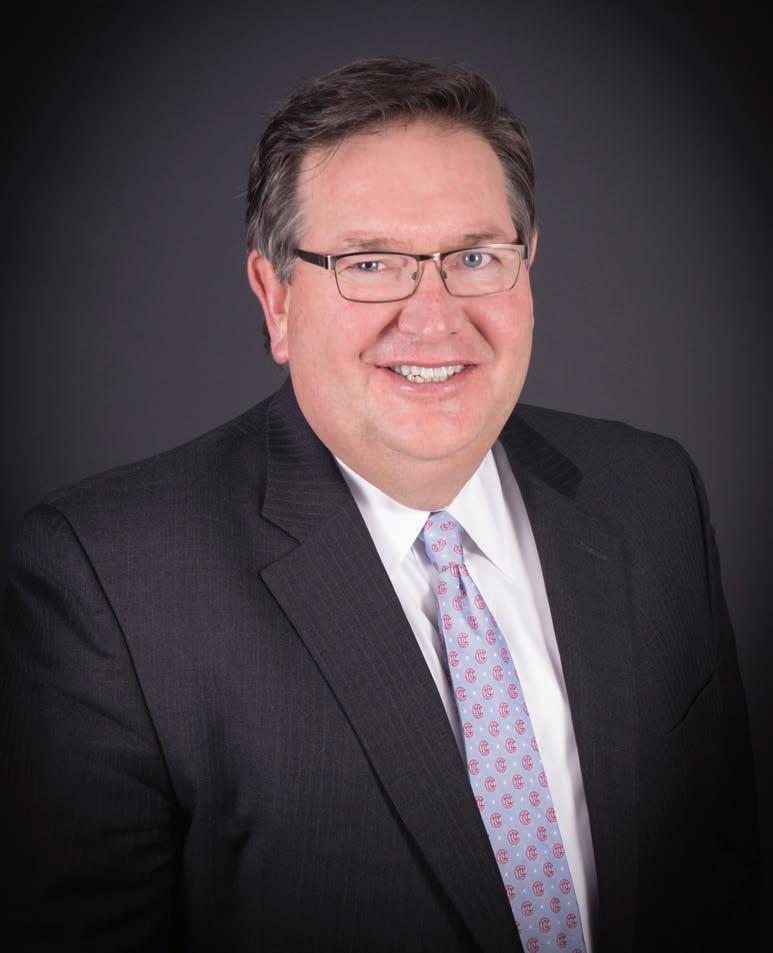
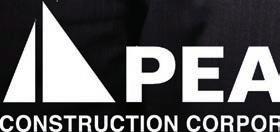

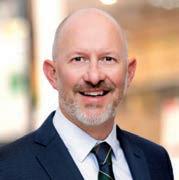
Dan O’Brien
Executive vice president and partner Hilco Real Estate
Scope of work: Dan O’Brien co-leads Hilco Real Estate’s lease advisory practice, managing a team that works dozens of consultative and transactional accounts per year, restructuring billions of dollars of leasehold obligations across thousands of leases, frequently on behalf of companies in transition or distress.
Biggest professional win: O’Brien has led the restructuring of approximately 500 leases across 20 countries for WeWork, part of one of the most significant real estate bankruptcy cases in history. Earlier, he led the restructuring of 600-plus leases in the U.S. and Europe as part of Cineworld/Regal Cinemas’ bankruptcy.
Other contributions: O’Brien participates in the American Bankruptcy Institute and Turnaround Management Association.


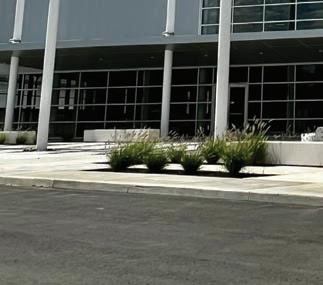

NOTE WORTHY $7.27 The average rent per square foot for Chicago-area warehouses in the first quarter of 2024, an increase from $5.13 per square foot in the first quarter of 2017 (Statista)

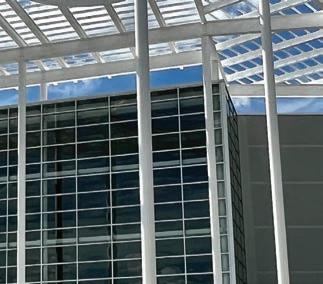
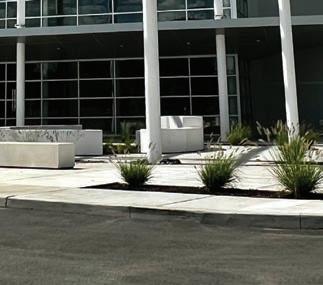






Justin Pelej
Executive vice president of development and principal Focus
Scope of work: Justin Pelej works on identifying, zoning and financing Focus’ real estate pipeline, overseeing as many as eight development projects at a time. In the last five years, he has overseen projects with a cumulative value of nearly $1 billion.
Biggest professional win: Pelej has led an effort to reposition regional malls, pursuing partnerships with the highest-quality mall owners. As a result, Focus has delivered on the initial phases of mall repositioning at Hawthorn and Fox Valley malls and looks forward to commencing work at Westfield Old Orchard in 2025.
Other contributions: Pelej is on the board of the Chicago chapter of Lambda Alpha International and is a mentor with The Goldie Initiative.

Joseph Root Founder Root Realty
Scope of work: Joseph Root, owner of Root Realty, leads a team of 18 professionals, managing an annual budget of $2 million and overseeing $160 million in properties housing approximately 1,000 tenants across Chicago. He is also founder of East Superior Real Estate.
Biggest professional win: From 2017 to 2022, Root Realty achieved a compound annual growth rate of 22%, expanding from 225 to 650 units under management. Root spearheaded strategic renovations and valueadd improvements, enhancing the property portfolio and increasing tenant satisfaction.
Other contributions: Root is active in the Rogers Park Builders Group. He recently concluded his tenure as an Inc. Masters member, where his opinion piece “What You Don’t Know About Chicago” went viral in April 2023.

Jake Pepper
Executive vice president Pepper Construction
Scope of work: Jake Pepper currently leads two companies, Pepper Energy and Pepper Environmental Technologies, manages all field supervision for Pepper Construction and is on the board of The Pepper Cos.
Biggest professional win: Recognizing an opportunity to diversify into the renewable energy market, in 2022 he launched Pepper Energy, which offers finance and development capabilities and expertise. Today, the team includes 19 people with sales projected at $100 million. Work is diversified across commercial and industrial markets, community solar and small-utility-scale solar.
Other contributions: Pepper is on the boards of the McGraw Wildlife Foundation and the University of Illinois Chicago College of Engineering, and he supports the U.S. Minority Contractors Association and Green Era.
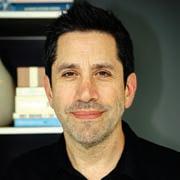
Jeff Shapack CEO Shapack Partners
Scope of work: Jeff Shapack founded Shapack Partners, a development firm focused on acquiring, repositioning, developing and leasing across all asset classes with architecture, design, brand creation and hospitality expertise.
Biggest professional win: Shapack catalyzed Fulton Market’s transformation by developing Soho House, sparking the area’s revitalization into the country’s fastest-growing submarket. Other projects include developing 167 Green; redeveloping and leasing 400 Noble to Barstool Sports and NanoGraf; developing the Hoxton Hotel, the Parker and 811 Fulton; and breaking ground on 220 Ada, a 29-story residential development.
Other contributions: Shapack is on the board of World Business Chicago and the advisory committee of the University of Chicago Crime & Education Lab’s Policing Leadership Academy, and is a member of The Economic Club of Chicago.
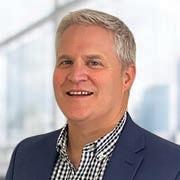
Jim Pettinger CEO Realogic
Scope of work: As CEO, Jim Pettinger is responsible for Realogic’s financial performance and spearheads the firm’s property technology initiatives.
Biggest professional win: He’s strengthened Realogic by improving processes, enhancing customer satisfaction, fostering innovation and broadening its client base to ensure no single client accounts for more than 5% of total company revenue. In March, publisher GlobeSt named Pettinger one of commercial real estate’s Best Bosses of 2024.
Other contributions: In addition to mentoring dozens of young commercial real estate professionals over the last 30-plus years — many of whom are now industry leaders who got their start at Realogic — he has supported organizations including the Real Estate Finance Forum, Commercial Real Estate Women and The Goldie Initiative.

Principal Lee & Associates of Illinois
Scope of work: Over his 38year career, John Sharpe, who co-founded Lee & Associates in 2002, has completed commercial real estate transactions valued in excess of $1 billion.
Biggest professional win: Sharpe is an industrial and investment property specialist with a regional and national portfolio. Over the last five years, he has referred 32 deals to 16 other Lee offices and helped 13 other Lee offices close 28 deals in the Chicago market. Together, the referral consideration exceeds $194 million in California, Texas, Pennsylvania, Florida and more.
Other contributions: Sharpe is active in the Society of Industrial & Office Realtors and the Association of Industrial Real Estate Brokers, and is a Certified Commercial Investment Member.

John Redmond CEO Redmond
Scope of work: John Redmond, who founded the firm in 2013 with $10,000 in capital, has led Redmond’s growth to a 40-plusperson team serving clients in Chicago and nationally, with 2023 revenue of nearly $100 million.
Biggest professional win: As the firm navigated the challenging corporate interiors market during the COVID pandemic, Redmond focused on diversification to maintain long-term growth and profitability. In 2022 he expanded with a Denver office and has led the pursuit of projects outside of commercial interiors, including lab and life sciences and retail.
Other contributions: Redmond is on the boards of Urban Gateways and the Redmond Foundation, which partners with Chicago Public Schools and City Colleges of Chicago to support women and minorities interested in architecture, construction and engineering careers.

Neil Sheehan
Principal Sheehan Nagle Hartray Architects
Scope of work: With a 40-year architecture career, Neil Sheehan is the founding principal of Sheehan Nagle Hartray Architects.
Biggest professional win: Under Sheehan’s leadership, the firm has undergone a period of intense growth paralleling the growth of the internet. Established in 2005, the firm has developed into a global data center architecture practice with offices in Chicago and London, clients including Meta and Microsoft, over $30 million in annual revenue and projects in North, Central and South America and Europe.
Other contributions: Sheehan is education committee chair of the Chicago chapter of the American Institute of Architects and supports the National Association of Women in Construction, ACE Mentor Program Chicago, Arquitectos and Canstruction.

NOTE WORTHY
In June, building materials made of copper had among the highest rate of price growth in the U.S., compared to the previous period.
(Statista)

Robert Smietana
President and CEO
HSA Commercial Real Estate
Scope of work: Robert Smietana has led development firm HSA Commercial Real Estate to grow its portfolio to more than 16 million square feet of office, industrial and health care facilities across 14 states. He’s completed over 200 developments comprising over 50 million square feet valued at $5 billion.
Biggest professional win: Smietana led HSA as it helped establish the I-94 ChicagoMilwaukee corridor as a critical supply chain link. In 2023 and 2024, Smietana and his team spearheaded four new warehouses along the corridor totaling 2 million square feet.
Other contributions: Smietana was an Illinois Tech adjunct professor for 10 years, was Kenilworth’s planning commission chairman and trustee, and spent 25 years on Chicago Commons’ governing board.
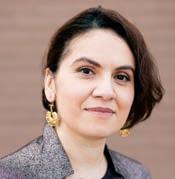
Claudette Soto
President and CEO
Baso
Scope of work: Claudette Soto founded Baso, a construction management, owner representative and permit coordination firm with a portfolio of projects totaling $65 million. In 2022 she launched Baso Tecnica, the only Latina-owned architectural and structural forensic firm in the Chicago area.
Biggest professional win: Soto left the corporate world to form her own business with a focus on serving the Black and Brown communities. Since its launch, Baso has doubled revenue on a yearly basis. The team is 100% composed of minority members and has managed a total of $96 million worth of projects.
Other contributions: Soto has served as board president and founding member of Chicago Unidos in Construction, Illinois Tech’s alumni board and the Chicago Plan Commission.

Senior vice president and managing director
Coldwell Banker Commercial
Scope of work: Dan Spiegel leads global operations of Coldwell Banker Commercial, implementing strategic initiatives that support a network of over 3,000 commercial real estate professionals. He is involved in commercial real estate tech and has mentored multiple startups.
Biggest professional win: Spiegel repositioned the Coldwell Banker Commercial brand, overseeing the 2023 launch of a redesigned website offering affiliates enhanced tools and a podcast with over 100 episodes featuring expert insights. Under his leadership, Coldwell Banker Commercial went from unranked in MSCI to No. 10 among the top 25 U.S. firms in property sales count and No. 16 in volume.
Other contributions: Spiegel is active in the Urban Land Institute and Chicago Architecture Center.

Phil Stafford
Chief operating officer, Chicago Colliers
Scope of work: Phil Stafford manages business operations for more than 400 professionals in Colliers’ Chicago offices. He also leads Colliers’ Real Estate Management Services, overseeing more than 65 million square feet across 300-plus downtown and suburban Chicago properties.
Biggest professional win: Over the past five years, Stafford has grown Colliers’ local property management portfolio from 50 million square feet, including the recent assignment for Prudential Plaza. Under his leadership, the Chicago office has averaged 1,000 brokerage transactions annually with a total value of $20 billion.
Other contributions: Stafford is president of the Building Owners & Managers Association of Chicago, whose membership consists of about 240 buildings representing approximately 80% of all rentable office space in downtown Chicago.
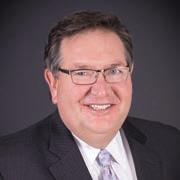
Michael P. Sullivan Jr. CEO Peak Construction
Scope of work: Michael P. Sullivan Jr. founded Peak Construction and guides the company’s overall planning, direction and operations.
Biggest professional win: Sullivan has led the growth of Peak with a 335% increase in revenue from 2018 through 2023. Driven by geographic expansion from the Midwest into the Northeastern and Southeastern U.S, Peak has grown to a $400 million-plus organization with 55 employees, a 72% increase since 2018, across three national offices.
Other contributions: Sullivan has been a member of Elgin Development Group’s recruitment and retention committee, a trustee of the Chicago Union League Boys & Girls Club since 2013 and has supported the Salvation Army’s Uptown shelter.



NOTE WORTHY 1.27 billion gross square feet
As of April, the amount of California’s LEED-certified building space, the most in the country, followed by Texas, New York and Illinois (Statista)







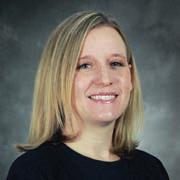
Carrie Szarzynski
Senior managing director
Hiffman National
Scope of work: Carrie Szarzynski, promoted to senior managing director and head of management services in January, leads Hiffman National’s property management group of 160 employees with a nationwide portfolio of more than 600 buildings. She oversees the entire Hiffman management portfolio and chairs the recruiting committee.
Biggest professional win: Since 2018, the portfolio expanded from 383 Chicago-area properties to over 600 assets across the country.
Other contributions: Szarzynski participates in the Women Business Leader program through the University of Kentucky Gatton College of Business & Economics, is a member of the Building Owners & Managers Association of Suburban Chicago Executive Circle and is a vice chair of The Goldie Initiative.
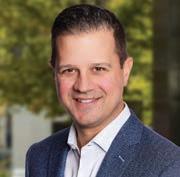
Vice president of leasing Irvine
Scope of work: Greg Tait is responsible for all aspects of leasing Irvine’s 4.2 million-squarefoot Chicago portfolio, composed of three Class A+ trophy towers: 300 North LaSalle, One North Wacker and 71 South Wacker. Under his leadership, the leasing team raised the portfolio lease percentage above 90%, and up to 94% this year.
Biggest professional win: During his career at Irvine, Tait has executed leases in excess of 2.75 million square feet. At 71 South Wacker, he took occupancy from 62% to 93% in under 18 months. His team has leased more than 600,000 square feet since July 2023.
Other contributions: Tait has been a board member of the Chicago Office Leasing Brokers Association since 2019.


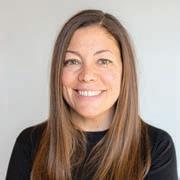
Karyn Wanaski
President Spark
Scope of work: Seeing environmental branding evolve into a critical element of commercial design and recognizing a gap in the market, Karyn Wanaski helped found Spark. Under her guidance, the firm handles an annual project volume of over $1.5 million, with clients including KPMG, Hilton and Guinness.
Biggest professional win: Wanaski has led Spark’s growth, including moving to a new studio at 745 N. LaSalle St. and expanding its national and international reach, securing high-profile projects in New York; Washington, D.C.; Europe and Asia. Projects awarded include the Guinness Open Gate Brewery.
Other contributions: Wanaski leads pro bono projects, working with nonprofits such as the Greater Chicago Food Depository and Gilda’s Club Chicago.
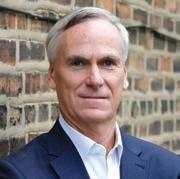
Ted Weldon
President Weldon Development Group
Scope of work: Since establishing Weldon Development Group last year, Ted Weldon has grown its development pipeline to more than $700 million, with several projects planned in the Fulton Market District, including 400 N. Elizabeth.
Biggest professional win: Previously, as executive vice president for development at Lendlease, he delivered a series of residential buildings despite pandemic challenges, including Porte in the West Loop, Cascade and Cirrus in Lakeshore East, and The Reed at Southbank in the South Loop. Weldon Development Group is working on a residential development at 1201 W. Fulton and a hotel at 210 N. Peoria.
Other contributions: Weldon is on the board of the Chicago Metropolitan Housing Development Corp. and is board president of SOS Children’s Villages Illinois.



New York City, Chicago and the San Francisco Bay Area were the most expensive U.S. markets to rent life sciences real estate in the first half of 2023.
(Statista)


1
200 E. Randolph St.
Chicago,60601
312-782-5800
JLL.com
225 W. Wacker Drive
Chicago,60606
312-470-1800
CushmanWakefield.com
3 CBRE
321 N. Clark St. Chicago,60654 312-935-1400
CBRE.com
71 S. Wacker Drive Chicago,60606 312-648-9150 Colliers.com
200 W. Madison St.
Chicago,60606
312-881-7000
Transwestern.com
444 W. Lake St. Chicago,60606
312-419-4900
Hines.com
300 Park Blvd. Itasca,60143
630-250-9700
HamiltonPartners.com
525 W. Monroe St. Chicago,60661 312-207-1100 TishmanSpeyer.com
4747 W. Peterson Ave. Chicago,60646 773-736-4100 ImperialRealtyCo.com
1 Oakbrook Terrace Oakbrook Terrace,60181 630-932-1234 Hiffman.com
Zeller.us
Options for vibrant culture, delectable cuisine and unforgettable entertainment.
120 W. Monroe St., Chicago, IL 60603 312-312-2142
Take your event to the next level at The Fillmore. Our luxurious private dining spaces and diverse Italian American menu are perfect for any occasion. With years of experience in exceptional fine dining and service, let us create a memorable dining experience for you and your guests. Don’t miss out! Now is the time to book your holiday event. www.roanokehospitality.com/ private-events

MARISOL RESTAURANT AND BAR
205 E. Pearson St., Chicago, IL, 60611 312-799-3599 • marisolchicago.com
Located in the Museum of Contemporary Art, Marisol Restaurant & Bar is a unique extension of the contemporary art experience. Featuring an innovative, seasonal menu from James Beard Award-winning Chef Jason Hammel and an immersive interior designed by renowned artist Chris Ofili, Marisol is perfect for business lunches, special occasions, or any event requiring a private dining space.

Continued
MORETTI’S RESTAURANTS
Visit our website for our locations across Chicagoland morettisrestaurants.com
Moretti’s was founded in Chicago and is 100% family-owned and exclusive to the Chicago area. The original Moretti’s is on the northwest side of Chicago. Ten other locations serve the north and west metro area. Moretti’s original family recipes range from traditional to the latest delicious trends. All ingredients are fresh, and everything is handcrafted to order.

Ranked by 2023 revenue. This list has been corrected since its original publication date.
ResearchbySophieRodgers(sophie.rodgers@crain.com).|ThislisthasbeenupdatedtoincludeClayco,TheMcShaneCos.,AldridgeElectricInc.andMarianiEnterprises'information.Thislistisnot comprehensive.ThelistincludesconstructioncompaniesheadquarteredintheChicagoarea:Cook,DuPage,Kane,Lake(Ill.),Lake(Ind.),McHenryandWillcounties. 1. FormerlyMarianiLandscape. 2. Company estimate.

seeksaQA
AnalystIIinBurrRidge,ILtotestwebAPIs/REST servicesusingknowledgeofscriptinglanguages, SQL,andhigh-levellanguagesincludingC#,Java. Applyatjobpostingtoday.com(Ref#82968)
Standard General
By Danny Ecker
The largest shareholder in Bally’s has reached an agreement to take over the gambling giant, which is poised to begin work on Chicago’s first casino.
Providence, R.I.-based Bally’s on July 25 announced the pending acquisition by Standard General, a hedge fund led by Bally’s Chairman Soo Kim that will buy the remaining shares it does not own for $18.25 per share. The price is higher than the $15-per-share offer Standard General made for the company in March.


To advertise contact Suzanne Janik at sjanik@crain.com (313) 446-0455
Pending regulatory approval for the deal, Bally’s will be combined with Standard General’s Queen Casino & Entertainment regional casino chain and remain publicly traded, according to a Bally’s statement.
The deal solidifies a new layer of complexity for the planned casino and hotel complex Bally’s is preparing to develop on the 30-acre Chicago Tribune Freedom Center printing plant property at 777 W. Chicago Ave. News of Standard General’s bid to acquire Bally’s raised questions about the strategic direction of the company and whether Kim’s venture would uphold its commitment to the Chicago project.
From Page 3
benefits agreement to be involved in any development since McCaffery Interests planned a $4 billion residential project, one of a string of failed projects at the massive site.
“Community members that have been living here, taking care of their homes, taking care of this community to the best of their ability should have a say in how this happens,” he said.
Their biggest concern is displacement if the campus expands, brings in new housing and sparks property value increases that stress current residents, he said. The group also wants access to the jobs that will be created and potential property tax relief for nearby residents.
At a press conference after the announcement, Pritzker said he wasn’t aware of the demand for a community benefits agreement, but argued there would be “quite a lot of community benefit that is already being invested in as a result of the commitment that’s being made here.”
“The jobs, the cleanup of the site itself, the investment of dollars that are going to provide great opportunities for the surrounding community, small businesses and residential — there is a great opportunity, but we all have to be shoulder to the wheel to make sure that this park is a huge success,” he said.
Ald. Greg Mitchell, 7th, said a community benefits agreement
Kim downplayed any dramatic changes at the time, telling Crain’s the takeover bid wouldn’t impact the Chicago casino effort.
“We’re very committed to Chicago,” Kim said in a March interview.
“Our interest in purchasing the rest of Bally’s that we do not already own is based on a firm commitment to all of the company’s opportunities, the greatest of which is fulfilling our commitments to the city of Chicago.”
Standard General’s March bid added to the skepticism about the financial viability of the Chicago casino. Bally’s had disclosed just days earlier that it was trying to close an $800 million “funding gap” to jump-start the development, a daunting challenge as high interest rates hold back financing for big real estate projects.
The
plant and remain on track to open the casino in 2026.
In addition to passing muster with the Securities & Exchange Commission, the merger and new structure of Bally’s will be closely watched by the Illinois Gaming Board. The state’s gambling oversight authority OK’d an operating license for Bally’s permanent casino in October, adding to the temporary operating license the company is now using for the casino it is running in the Medinah Temple building in River North.
deal solidifies a new layer of complexity for the planned casino and hotel complex Bally’s is preparing to develop.
But the company announced earlier this month that it had cleared that funding hurdle, securing $940 million in financing for the Chicago casino project in a deal that hands future ownership of the property to Wyomissing, Pa.-based real estate investment trust Gaming & Leisure Properties.
Bally’s said at the time it was set to begin demolition of the printing
wasn’t necessary because he and Ald. Peter Chico, 10th, whose wards share the South Works site, were both elected to represent their communities.
“I’m the son of the 7th Ward. He’s the son of the 10th Ward over there,” he said. “We will do our due diligence in making sure that our decisions and movements over there are in the best interests of the residents we represent.”
Chico said “what’s different about this is we had all three levels of government partnering together to make sure that this was done and done right.”
He expects there to be community meetings scheduled soon and said PsiQuantum “gave me their assurance” that they will hold meetings to “alleviate any environmental concerns.”
The project still needs to receive zoning approvals from City Hall. Because of its size, it will require a planned development, an overarching zoning district that will determine the size and scope of buildings, the allowable industries within the district’s border and the potential to codify commitments made by the developer or the quantum consortium.
Curt Bailey, president of Related Midwest, told reporters “we are looking at having the facility up and running in 2027, which is about as fast as you can go.”
The zoning process will take at least three months, but likely longer. Community meetings will be held before the project faces a se-
A spokeswoman for the Illinois Gaming Board did not immediately respond to a request for comment.
In a statement, Bally’s CEO Robeson Reeves said the company will “continue to execute on our initiatives . . . while proceeding with our development pipeline, including construction of our permanent casino resort in Chicago, for which we recently announced a comprehensive financing plan.”
ries of votes at City Hall. The project is likely to be classified as light manufacturing and for high-tech office space, which will not trigger further environmental reviews set up by the city to monitor air quality.
The City Council will also surely want to know more about the economic incentive package they’ll be asked to approve and when the city can expect to receive a return on that investment beyond the immediate construction jobs created to build the site in the coming years.
Johnson has pledged $5 million towards the project from proceeds from the sale of bonds as part of his housing and economic development bond plan approved in the spring. The county is directly providing $5 million towards the development.
But the real incentive from the city and county is the creation of a new version of a Class 8 property tax incentive that will allow the site to be taxed at a rate of 10%, rather than 25%, for 30 years.
A spokesman for Johnson said an analysis projects the “total benefit of more than $175 million” of the 30-year tax incentive.
The Cook County Board of Commissioners must still approve the new classification, as the proposed property tax relief would end after 30 years, without the ability to renew.
If the new incentive is approved by the county, the City Council would then be able to approve an ordinance applying the property tax break for Related Midwest, which is developing the site.
















































































































































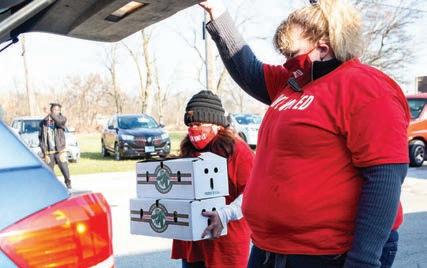






in the country. Like “The Bean,” the shiny sculpture formally known as Cloud Gate, the 24.5-acre park on Michigan Avenue has become a Chicago icon. From the outset, it was hailed as a feat of engineering, art and urban renewal, a gem that a New York Times reviewer said transformed a “wasteland into America’s most dazzling urban park.”
“Its success has been breathtaking since the moment it opened,” says Paul O’Connor, who was leading World Business Chicago, the city’s economic-development arm, when the idea for the park was proposed in the late 1990s. “It restored pride to the city. It was a wonder.”
Millennium Park became a signature achievement of Mayor Richard M. Daley and a shining example of Chicago’s tradition of public-private partnership, as companies and wealthy families donated $220 million of the $490 million to build the park. Almost since the park was finished — albeit several years late and several hundred million over budget — it seems people have been asking about the next big project and who the next generation of civic leaders are to lead it. Two decades later, when the city could again use both a morale and image boost, the question emerges whether the corporate community still has the will and pull it once did. For clues to the answer, it’s worth looking at how Millennium Park came to be.
A mayor and a CEO
Daley wanted to eliminate an eyesore between Michigan Avenue and the lakefront that was the Illinois Central Railroad tracks and a large parking lot that presented a less-than-appealing industrial blotch on the city’s front yard. After some shrewd legal wrangling, the city got control of the air rights over the tracks, which it wanted to deck over with a park. It would build parking garages topped with what would become the largest green roof in the world.
Daley used a tax-increment financing district to build the parking infrastructure and enlisted John Bryan, CEO of Sara Lee, to raise money for the park. Bryan, however, pushed Daley to think bigger.
“They looked out John’s window out at the park and the lakefront, brainstorming,” Ariel Investments Chairman John Rogers, who was president of the Chicago Park District board and whose firm became one of the 75 founding donors to the park foundation, recalled of an initial meeting between Daley and Bryan.
“It was this idea that Australia had this wonderful opera house on the ocean . . . some combination between water and something that would make Chicago memorable in a similar way. There are certain cities . . . you think about the Eiffel Tower in Paris, the Statue of Liberty in New York. There was kind of a sense it was our turn to do something iconic.”
Bryan was a prolific fundraiser, having led a $100 million campaign for the renovation of the Lyric Opera House. Behind his

Southern charm and drawl, Bryan drove a hard bargain: a minimum check of $1 million.
“Other capital campaigns in town had never had anything like that. It took a certain amount of courage and confidence,” Rogers says. “John was perfect for this role. Every CEO would respond to him. He was impossible to say no to.”
Bryan lined up big companies and wealthy families to underwrite the signature elements of Millennium Park, such as the Jay Pritzker concert pavilion, the Crown Fountain, the BP Pedestrian Bridge and the Cloud Gate sculpture that would become known as “The Bean.”
During his 22-year tenure as mayor, Daley was hailed for his passion and his vision to make Chicago a global city and a willingness to spend money on both.
Before he left office in 2011, Millennium Park would become the crowning achievement of a list that included turning Navy Pier into a tourist destination and doubling the size of the McCormick Place Convention Center. He declined an interview request.
“There was an age when Rich Daley was mayor, and Chicago’s business community was as active as it’s ever been — its civic sector,”
Richard Florida, a University of Toronto professor and urban affairs expert, remarked in an interview with Crain’s earlier this year. “The waterfront was made even more wonderful. People said, ‘Oh, my, look at this. This looks like an example of a spectacularly revitalized American city that works, led by a great mayor, with a vibrant business community.’ ”
It also won over critics at home, such as Josh Hale, who had just moved to Chicago and was working at Cristo Rey Jesuit High School in Pilsen when the park opened.
“I pooh-poohed Millennium Park,” says Hale, who now leads the Big Shoulders Fund, a nonprofit that supports Catholic schools. “I wondered, ‘Why are we building this park downtown?’ But about 10 years ago, after seeing people from all over the city, every walk of life, and all the tourists coming in . . . I saw the brilliance
of the vision for creating a space for everyone in the city. It was visionary and a gift to the city.”
Changing a neighborhood
Millennium Park also fueled a revitalization of South Michigan Avenue, historically a poorer, grittier cousin of the Magnificent Mile north of the Chicago River.
Magellan Development Group had just started planning a massive, new residential development on 28 acres east of Michigan Avenue, between the river and Randolph Street, as Daley was laying the foundation for Millennium Park.
“Old-school Chicagoans didn’t believe residential belonged south of the river,” says David Carlins, CEO of Magellan. “Millennium Park changed the narrative about what could be a neighborhood.
“This was mostly office,” he recalls of what became known as Lakeshore East, where, since 2002, 15 high-rises have been built, including the iconic Aqua and St. Regis towers. “Our fight in convincing people it was livable south of the river was made easier by Millennium Park. The narrative of Chicago is different now: the greening of the city, making it more livable. Millennium Park is the cherry on top.”
A year after the park opened, the city commissioned a study that found the park was responsible for about $1.4 billion in residential development and that it increased residential real estate values in the area by $100 a square foot.
Billy Lawless Jr. and his father signed a letter of intent for space that would become the Irish restaurant The Gage in a building across the street from Millennium Park just before it opened. Aside from two years during the COVID-19 pandemic, the restaurant has grown every year since it opened in 2006. He opened a second restaurant, Acanto, next door.
“Certain people said we were crazy,” says Lawless, who estimates commercial lease rates on Michigan Avenue have tripled since the park opened, of the decision to bet that the neighborhood would take off. “Our initial revenue models were modest. We
Rogers acknowledges the deaths last year of Andy McKenna, longtime McDonald’s chairman, and Jim Crown, CEO of Henry Crown & Co. and a key leader of the Civic Committee of the Commercial Club of Chicago, were big blows. The city also has lost some highprofile headquarters, including Boeing, as well as Citadel and its megadonor founder, Ken Griffin — both of which were very active corporate citizens.
“We’ve lost some, but a whole bunch have said, ‘No, we’re going to stay,’ ” Rogers says. “It’s going in the right direction.”
He and other leaders point to the effort by the Civic Committee to raise $100 million from private donors for a violence-prevention program that was spearheaded by Crown before his death. A strong argument can be made that violence is the biggest problem facing Chicago — one that undermines its ability to attract tourists and retain companies, which was highlighted by a shooting near “The Bean” two years ago.
didn’t anticipate the kind of growth the park brought.”
The park wouldn’t have happened without the civic partnership, says Bill Daley, the former mayor’s brother, who joined JPMorgan Chase as its Midwest chairman when it bought Chicago-based Bank One about the time Millennium Park opened.
“It shows the beauty of Chicago, the civic pride and brains and muscle of Chicago to do something that special,” adds Larry Levy, a veteran entrepreneur and investor who was among the donors for the park. “There are very few cities where this would happen.”
Does Chicago still have it?
Can Chicago still draw on its corporate community to do big things that might start a new chapter that changes the narrative of the city and the region?
“Civic will is what builds cities,” says O’Connor, who for years used Millennium Park as a tool to sell out-of-town CEOs on making investments in Chicago. “Unless we all share it, we’re playing small ball, and we’ll pay for it later. It’s all about thinking big, or you die.”
Much has changed in the past 20 years. Chicago’s corporate landscape has continued to be altered by mergers and consolidation. Leadership is less parochial, and the companies that remain are much more global players. A pandemic has made geographic ties even more tenuous.
“The last couple mayors had very little engagement with the business community before they were elected,” says Bill Daley, who ran unsuccessfully for mayor in 2019. “The business community has changed. You don’t have the same number of big corporate headquarters. And if you did, they don’t have those same ties. They don’t have that history. It’s very different. Their companies are everywhere, and so are the CEOs. And very few of them are from Chicago.”
Although he was a transplant from Mississippi, Bryan became a larger-than-life Chicago CEO. He died in 2018, long after the company he led, Sara Lee, was broken up.
“The business community is as engaged as it’s been in a long time,” says Derek Douglas, president of the Civic Committee, a group of prominent business leaders. “Getting involved in public safety is no small thing. We wanted to try to raise $100 million in five years to scale this community violence work. We were able to get there in one year, and we’re not done.”
He says the group has an initiative focused on mass transit, which faces a funding crisis coming out of the pandemic. The future of downtown also is a topic of conversation.
“With Millennium Park, there was an effort to raise money, then you had to build the park,” Douglas says. “We have this goal of making Chicago the safest big city in the country. It’s a 10-year strategy, but we’re just getting going.
“When violence gets reduced, I think that will feel very real and very tangible to people. It’s not going to have a tourist coming to it and visiting, but we might get more tourists coming.”
Rogers credits the group, of which he is a member, for tackling “things that are not comfortable. They’re tied to race in many ways. The Civic Committee understands it has to create a business community that’s welcoming to all walks of life.”
Hale, who regularly raises money from the corporate community for Big Shoulders, says the civic partnership that created Millennium Park hasn’t shrunk so much as morphed.
“A lot of people have asked who carries that mantle today,” he says. “It felt like before it was the corporate headquarters and CEOs. That still exists, but it feels like there are fewer of them.
“It’s not fractured; it’s just different. There are a lot more asset management and private-equity firms that have stepped up. More of it was centered downtown in the past. It’s spread out wider than it was. Nonprofits, foundations and community-based organizations are part of those conversations now, too. It’s brought more people into the discussion.”
be named, pointed to virtual fundraisers that already popped up for Harris — Black Women for Harris and Black Men for Harris, which was attended by Mayor Brandon Johnson, raised nearly $3 million combined — as evidence she’ll quickly mobilize new contributors and predicted the same will play out in Chicago.
"This is a very rare opportunity to have someone who comes from the community in that kind of high-level campaign," the source said. "There's a lot of excitement, enthusiasm, and I would anticipate new pools of funds that will be available and that we're going to get moving on here pretty quickly.”
Several of Chicago’s top donors to national Democrats declined requests to be interviewed for this story, but those who responded said they’re enthusiastically supporting Harris.
Newsweb founder Fred Eychaner, the largest Illinois donor to Democrats over the last decade, previously told Crain’s he’s “absolutely” ready to back Harris when asked before she began to lock in the support of top Democrats across the country.
Over the last two years, Eychaner donated $7 million to the Forward Future PAC and another $923,000 to what is now called the Harris Victory Fund, previously the joint-fundraising committee Biden Victory Fund. That's on top of maxing out a $6,600 contribution to the Harris for President political account, which has stricter limits than political action committees.
Michael Sacks, CEO of GCM Grosvenor, and his wife, Cari, contributed over $1.4 million to the Harris Action Fund and another $1 million to the Forward Future PAC. The couple also maxed out to Harris for President.
Sacks declined to comment for this story. He also chairs the DNC host committee, which has already met its $85 million fundraising goal, according to the Tribune. Hours after Gov. J.B. Pritzker endorsed Harris, he and Sacks delivered lunch from Manny’s Deli to the staff and volunteers preparing
enhanced visitor experience upgrades and increased investments in animal care and conservation efforts, the zoo said.
“We as an organization want to continue to innovate, we want to continue to lead and we want to continue to be a zoo and a destination that Chicago is proud of,” said Dr. Michael Adkesson, president and CEO of Brookfield Zoo Chicago.
The project will rely on both private and public funding sources, Adkesson said, in what will be the largest fundraising campaign in the zoo's history and has already included its largest-ever single investment, the $66 million Tropical Forests habitat expected
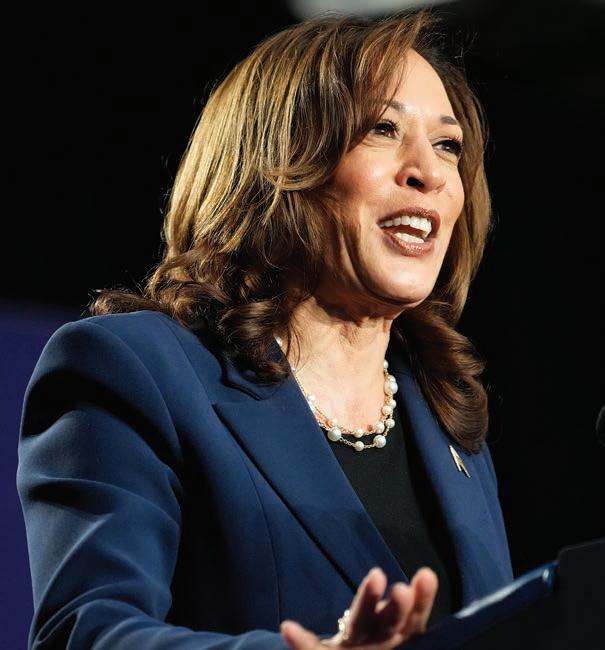
for the convention to rally the troops and whip up enthusiasm for Harris, according to two sources in the room.
Another major donor, venture capitalist and Transcarent CEO Glen Tullman, told Crain’s, “I’m 100% behind the Democratic nominee.”
“As President Biden said, ‘Don’t compare me to the Almighty, compare me to the alternative,’”
Tullman said in a statement. “We strongly support the Democratic platform of a strong economy, job creation, support for our allies including Israel and Ukraine, and protection of individual rights including the right for women to choose.”
Tullman has contributed over $1.3 million to the Harris Victory Fund, $25,000 to the Harris Action Fund and another $400,000 to Future Forward, with $200,000 coming from a trust in his name, according to Federal Election Commission filings.
“I’ve been a pretty prolific fundraiser and I’m going to use my full book of contacts to try to get her elected,” Bob Clark, founder of Chicago-based construction firm Clayco, said in an interview with
to open in 2025.
Adkesson said the zoo is well underway in its fundraising efforts, having already secured nearly $200 million toward the project.
Part of the project’s scope is to better utilize its existing footprint, which includes 235 acres in the Forest Preserves of Cook County, and calls for significant development along the zoo's western border.
“We were blessed with a lot of undeveloped property that we're now envisioning growing into,” Adkesson said. “That's really a reflection of a desire to be able to provide larger and more spacious habitats for the animals and really working to create an immersive flow as our guests move through the zoo.”
The zoo is already underway on the first phase of the project, which
debate, (Biden) did not strongly state the case of why the Democratic Party is the only party that trusts women, and how the Republican Party and Donald Trumphandpicked Supreme Court justices have caused this public health care crisis.”
Harris no stranger to Chicago
While Harris is new to the top of the ticket, she is not unknown to wealthy Chicagoans, given her previous run for president and the multiple official stops in the city she’s made as vice president, which are often followed by evening fundraisers.
Harris was the featured guest at a 2023 fundraiser at Desiree Rogers' Gold Coast apartment. The Black Opal CEO was the White House social secretary under former President Barack Obama. Harris was also previously feted at a dinner hosted at Sacks' home prior to her run for president.
Bloomberg News. “I sent my endorsement with a link to all my contacts and I don’t know what the results of that have been yet, but I’m definitely going to start working the phones.”
Clark has already held an event for Biden in Chicago this year and plans to organize one for Harris later this year.
Sarah Garza Resnick, who runs Personal PAC, an abortion rights group focused on Illinois politics, shares many of the same local donors that fund national Democrats. She said it's important to have someone at the top of the ticket that “openly uses the word abortion and talks about it on a daily basis to be the champion of the Democratic Party.”
Garza Resnick said female donors will be more inclined to give to Harris.
"I totally think it's going to bring more women, and, frankly, young women who are in their reproductive years have the greatest chance of getting pregnant with unintended pregnancies, and they are scared,” she said.
While the donors she speaks with were grateful to Biden, many were "frustrated that during the
will culminate with the completion of its $66 million Tropical Forests habitat, designed to replicate the natural homes of gorillas, orangutans and monkeys. So far, the zoo has also invested in a $10 million renovation of its Seven Seas dolphin habitat, a reimagining of the Theodore Roosevelt Memorial Fountain and the opening of the Philip W. K. Sweet Jr. Animal Care & Conservation Center.
Future habitats
Other future habitat projects include the Pacific Coasts of the Americas, which will bring the aquatic and marine life of the Peruvian coastline to visitors, and the Himalayan & Central Asian Steppe, which will highlight the rugged landscape home to snow leopards and takin.
“Nearly half of the zoo’s 235
R4 Services founder Trish Rooney was at both events. She described Harris as “very engaging” and said she “remembers everything” about donors.
“When I saw her at Desiree’s, we were talking about the dinner that Michael Sacks had, and she was like, 'How's Michael? I want to see him,’ ” Rooney said. Rooney is among the local fundraisers seeking to host events before the Nov. 5 election.
A previously scheduled "Lawyers for Biden" fundraiser July 31 is still on the books, according to a source attending the event. As of now, Biden is expected to speak at the fundraiser, and donors are still committing over $1.5 million to what is now Harris’ campaign, the source said. Biden's schedule could change now that he's dropped out of the race.
An attorney who is not attending the event but is a frequent donor to Democrats, Robert Clifford, told Crain’s he intends to support Harris. Clifford has contributed a total of $150,000 to the Harris Victory Fund and Harris Action Fund in his own name and through his law firm, Clifford Law Offices.
“We will continue to be all in as we were for Biden,” he said.
Crain's reporters Brandon Dupre and Katherine Davis contributed to this story.
acres will be revitalized thanks to the Next Century Plan,” Cook County Board President Toni Preckwinkle said in a statement. “This ambitious initiative leverages the generous expanse of Cook County Forest Preserve land to promote a vital conservation message. It marks a significant step forward in our commitment to sustainability and environmental stewardship, showcasing the crucial role our local ecosystems play in global conservation efforts.”
Earlier this year as part of a rebranding effort, Brookfield Zoo and its parent organization, the Chicago Zoological Society, merged to form one entity, Brookfield Zoo Chicago.
Last year, the zoo received its largest-ever private donation — a $40 million gift from an anonymous family.

